Exploring and innovating through Te Ao Māori
Māori Deaf students build digital version of Marae

An early learning journey through Matariki whetū
Tī kōuka leaves energise exploration and inquiry learning
26 JUNE 2023 | VOL. 102 | NO. 8

4 Māori Deaf students build digital version of marae to empower community
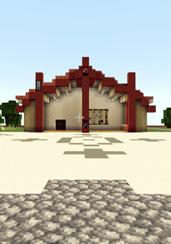
10 Mānawatia a Matariki

14 An early learning journey through Matariki whetū

18 Connecting as whānau and hapori at Raureka Kindergarten

22 Māori and Pacific communities collaborate to build unique fale

26 Tī kōuka leaves energise exploration in early learning
New resource explores whakapapa, identity and belonging
Student-led mahi turns bike-trail dream into reality
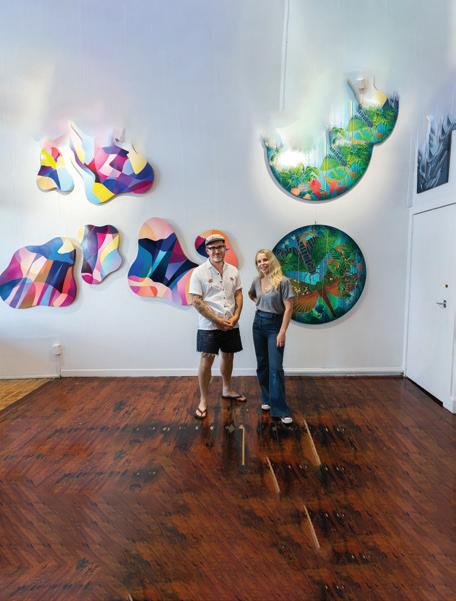
36 Elevating transitions between education and employment
42 New game introduces students to intricacies of agricultural sector

46 Cashing in on cross-curricular opportunities for social good
On
1 Tukutuku Kōrero
the
in
Exploring and innovating through Te Ao Māori build digital version of Marae energise exploration and inquiry learning An early learning journey through Matariki whetū 26 JUNE 2023 VOL. 102 NO. ISSUE 102.8
4 14 10 18 22 30 26 June 2023
the cover Page 4. Rūaumoko Marae has been an important part of the Māori Deaf community for 30 years. To mark the 30th anniversary of the Marae, ākonga Turi Māori (Māori Deaf students) have built
Marae
Minecraft.
Contents
EDUCATION GAZETTE ONLINE
Whatu mauri sets transformation in stone
A pre-dawn ceremony was held in June to mark the start of construction at the site of the new Marlborough Boys’ and Girls’ Colleges’ shared site.

Noticing, recognising and responding to learning progress
Te Mātaiaho | the refreshed New Zealand curriculum will support every ākonga to experience success in their learning, and help them progress and chart the path of their own learning journey.
Watch: Traumatic incident response in education
Te Mahau staff talk about Traumatic Incident teams, and how they help early learning services and schools to prepare for, manage and respond to traumatic events, crises and sensitive disclosures.

To view the PLD, general notice listings and vacancies at gazette.education.govt.nz
Scan the QR codes with the camera on your device.
PUBLISHED BY
Education Gazette is published for the Ministry of Education by NZME. Educational Media Ltd. PO Box 200, Wellington.
ISSN 2815-8415 (Print)
ISSN 2815-8423 (Online)
All advertising is subject to advertisers agreeing to NZME. Advertising terms and conditions www.nzme.co.nz/ media/1522/nzme-advertisingterms-sept-2020.pdf
STORY IDEAS
We welcome your story ideas. Please email a brief (50-100 words) outline to: gazette@education.govt.nz
SUBSCRIPTIONS
eleni.hilder@nzme.co.nz
VIEW US ONLINE Web: gazette.education.govt.nz
Instagram: @edgazettenz Youtube: youtube.com/ edgazettenewzealand
PLD
KEY CONTACTS
Reporter gazette@education.govt.nz
Display & paid advertising
Jill Parker 027 212 9277 jill.parker@nzme.co.nz
Vacancies & notices listings
Eleni Hilder 04 915 9796 vacancies@edgazette.govt.nz notices@edgazette.govt.nz
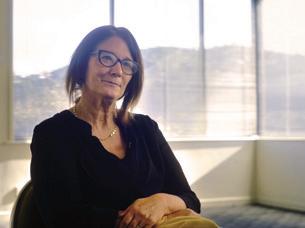
DEADLINES
The deadline for display advertising to be printed in the 17 July 2023 edition of Education Gazette is 4pm on Friday 30 June 2023.
VACANCIES NOTICES
2 Education Gazette gazette.education.govt.nz This publication is produced using FSC® Certified paper from Responsible Sources.
Putting mātauranga into practice
Professor Rangi Mātāmua once told Education Gazette that if you don’t share knowledge, it’s not knowledge. The only way that knowledge lives on, is with practice. This is the opportunity that Matariki provides early learning services, schools and kura across the motu – to take what you are learning/have learned/already know about Te Ao Māori and Mātauranga Māori and weave it into your everyday practice. This might begin with a celebration, a waiata, and a kai with whānau and hapori on 14 July, and continue with year-round exploration of te ao Māori concepts and te reo Māori me ōna tikanga within the context of your own local histories, places, and stories.
In this edition we share a snippet of what this looks like for some of our early learning kaiako, tamariki and whānau, as well as some resources to support your journeys.
Exploring te ao Māori concepts beyond Matariki is front and centre across this edition; whether it’s ākonga Turi Māori (Māori Deaf students) bringing the digital world and the Māori world together in Minecraft as a legacy learning platform; an early learning service in Tāmaki Makaurau exploring the regenerative learning potential of tī kōuka leaves; or a beautiful new fale and pou that grounds and connects the Māori and Pacific communities of a West Auckland primary school.

Keeping attendance and engagement top of mind, we also look at how Palmerston North Boys’ High School is keeping ākonga engaged in learning by elevating transitions between education and employment, in a personalised way, and with support from the community.
Mānawatia a Matariki!
Sarah Wilson, Ētita | Editor
Ākonga Turi Māori fused their cultural passion and digital skills to breathe life into Rūaumoko Marae. Not only does the digital version look like the real-world Marae, it also supports the purpose and function of the Marae.

EDITOR’S NOTE
3 Tukutuku Kōrero 26 June 2023
Connected Ako: Digital and Data for Learning
 Ākonga Turi Māori (Māori Deaf students) have built the Rūaumoko Marae in Minecraft as a legacy learning platform.
Ākonga Turi Māori (Māori Deaf students) have built the Rūaumoko Marae in Minecraft as a legacy learning platform.
Focus:
Te ao Maori in digital design Focus:
Māori Deaf students build digital version of marae to empower community
Rūaumoko Marae has been an important part of the Māori Deaf community for 30 years. To mark the 30th anniversary of the Marae, ākonga Turi Māori (Māori Deaf students) have built the Marae in Minecraft. The project brings together the digital world and the Māori world.
Rūaumoko Marae is a central part of the Māori Deaf community – it is a place where Turi Māori can learn, connect and just be, says senior student Kaylee.
The fusion of learners’ cultural passion and digital skills is helping breathe life back into Rūaumoko Marae and reigniting the ahi kā, burning fire and passion, of the Māori Deaf community.
For the 30th anniversary of the Marae, students have worked together to build the Marae in Minecraft. Not only does the digital version look like the real-world Marae, it also supports the purpose and function of the Marae.
Māori strategic lead Dr Kathie Rifle (Te Ātiawa, Ngāti Porou) at Ko Taku Reo Deaf Education NZ, explains the importance of this project to the community.
“In Aotearoa New Zealand our indigenous Deaf community experience double discrimination and disadvantage as they navigate the experiences of developing a secure identity as both Deaf and Māori.”
The need to rectify this disadvantage is one of Kathie’s goals in encouraging the Māori Deaf community back to the Marae.
“I think the key is that this is a place where they can be themselves. They can be Māori Deaf without having to fit into a hearing world, without having to fit into a western world, without having to fit into anybody else’s world.”
Building a digital legacy
Rūaumoko is a tūrangawaewae for Māori Deaf; a place to feel connected and to grow Māori Deaf identity. The digital marae provides a platform for further growth.
Nathan Martin, Ko Taku Reo Deaf Education NZ e-learning designer and developer, says building Rūaumoko Marae in Minecraft is an opportunity to continue the learning that has been happening over the past 30 years.
“The intent of building the Marae was to create a legacy learning platform so students to come will build
on top of what already has been built. Deaf history, Māori history.
“But what I like about it is that the students are owning the learning and they’re building it and they’re learning at the same time, and they’re doing it together,” he says.
“The Māori world and the digital world can come together – and Minecraft is a great example of that,” says Kaylee.
She says she has enjoyed the project and is thankful to tutor Nathan Campbell and ImpactED facilitator, Wilj Dekkers, for helping the students develop their skills – all while having fun.
“They’ve taught us how to figure out for ourselves, how to get to grips with the digital Minecraft platform and build a whole world. It’s been really hard work,” she says.
“The use of free platforms like Minecraft to upskill digital capabilities is harnessing students’ existing passion as consumers of tech, but getting them into the driving seat, where they are developing their own coding skills, their abilities to create online content, and solve real-world challenges,” Wilj explains.
“Building new skills and confidence will open doors to exciting career options in the future.”
Bringing together the digital world and te ao Māori
Many of the features in the physical Marae can be seen in the Minecraft Marae – from the Marae ātea, to the tukutuku panels and carvings. The digital Marae also enables people to interact with NPCs (non-playable characters) based on kaumātua and tūpuna of the Marae, who share stories using New Zealand Sign Language or subtitles.
Nathan is proud that this is a project built by Māori for Māori.
5 Tukutuku Kōrero 26 June 2023
“They’ve started a place for them to come together and connect: a place to belong; feel safe; a space to collaborate; a space to learn – and it’s all wrapped up in identity.”
The whanaungatanga, kotahitanga and manaakitanga involved in this project is evident. Senior student Callan says he has loved being able to work with his peers.

“I really love to work together, like being with my mates and discussing everything in sign and agreeing on things. The teamwork was the best part.”
Kaumātua Whiti Ronaki says Minecraft is something new but “really good” and believes digital learning is positive for Turi Māori.
“They’re learning how to use computers, what they are, and they can use it to learn about their iwi and about the land, where they’re from,” he says.
It’s a sentiment echoed by residential youth worker Eric Matthews (an alumni of the Deaf school himself) who says he would like to see more and more visual ways to talk about Māori stories and Māori myths.
“A lot of people just haven’t accessed that information about te ao Māori. So yes, I think technology is very important, especially if we can use sign language and use visual ways of presenting that information to support our children to learn about their world.”
This is a powerful example of how the insights of te ao
Māori and the power of digital and data can be successfully woven together, one of the priorities outlined in Connected Ako: Digital and Data for Learning, which will guide education agency work plans in the coming decade.
What’s next? Kathie and the team are exploring ways to build on the project in the years ahead – new content developed through a powerful te ao Māori lens whilst further expanding students’ technical skills and championing STEM career pathways.
“Where there are resources and technology available that help to strengthen language, culture and identity –that is the key to educational success.”
Watch a video about the Deaf Marae Minecraft story: education.govt.nz/digitalstrategy/ stories
Explore the Rūaumoko Deaf Marae in Minecraft on Ko Taku Reo’s website: kotakureo.school.nz/ parents-and-whanau
6 Education Gazette gazette.education.govt.nz
“The Māori world and the digital world can come together – and Minecraft is a great example of that.”
Kaylee, senior student
Senior student at Ko Taka Reo, Kaylee, discussing in New Zealand Sign Langauage the importance of creating the Deaf Marae in Minecraft.
“The intent of building the Marae [in Minecraft] was to create a legacy learning platform so students to come will build on top of what already has been built. Deaf history, Māori history.”
Nathan Martin
Classroom support
Minecraft Education has features built specifically for learning environments to support collaboration, assessment, coding, and more. There are more than 600 standards-aligned lessons to engage students across the curriculum. The Rūaumoko Marae in Minecraft project has been developed with MoE accredited provider ImpactED, through Digital Storytelling Aotearoa. Read more at dsta.co.nz.
Professional Learning and Development (PLD) providers are great at helping teachers navigate these lessons and can tailor the PLD to teachers, sharing tips and tricks to use in the classroom, and building confidence and competence in teachers and students using the platforms.
Te ao Māori in digital design
This is an example of creating a culturally responsive environment where the insights of te ao Māori are woven with the power of digital and data.
Other important actions in this area include:
» Digital initiatives provide many opportunities to work alongside Māori to shape education. The potential of digital to support mātauranga Māori and advance te reo Māori is already apparent. There is scope to bring these opportunities to more ākonga.
» Whānau, hapū and iwi have a critical interest in education and education outcomes for ākonga. For iwi and hapū, tikanga will determine best practice in appropriate digital contexts.

» When using international tools and platforms seek to provide opportunity for te ao Māori, in keeping with partnership and Te Tiriti.
» Inclusively designed technology can open doors, enhancing the voices and views of those not currently well served by the education system.
7 Tukutuku Kōrero 26 June 2023
Students working on the Minecraft project at Rūaumoko Deaf Marae.
 Kaylee explains how stories of the students, kaumātua and tūpuna of the Marae, are shared within the Minecraft platform, using New Zealand Sign Language or subtitles.
Kaylee explains how stories of the students, kaumātua and tūpuna of the Marae, are shared within the Minecraft platform, using New Zealand Sign Language or subtitles.
Introducing Te Puna Kōrero:
Celebrating stories of digital success in education
In the coming months Education Gazette will offer a series of articles highlighting digital success stories from across the education sector.
Stories like this one, of the talented students creating the Rūaumoko Deaf Marae digital legacy platform, will be regularly showcased.
We will introduce you to students and educators from early childhood, compulsory schooling, alternative education, and tertiary.
You will meet Ngakau (who is learning to drive through virtual reality simulation at Waimate College), Amethyst (who’s developing a student-led Maker Space for the Manurewa community through Te Ara Poutama

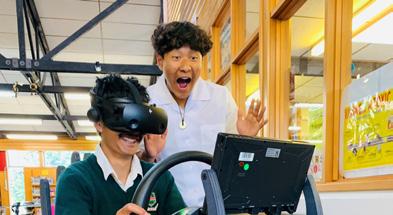
How is learning in a virtual world making young Kiwis safer drivers at Waimate High School?
Alternative Education Centre), and Romana from Digimatua (who is building digital skills for Pacific families to be able to better support their children’s education), and many others.
Keep an eye out for the story where Ginni Orr, e-learning integrator, discusses the impact of her own Professional Learning and Development journey inspiring students at Avonside Girls’ High School.
All articles and videos will be available online at gazette.education.nz.
How is data better identifying learners in need of support at Massey University?
How is building teachers’ digital skills sparking imagination in learners at Avonside Girls’ High School?

How are families with stronger digital skills better supporting children’s education with Digimatua’s Pacific community digital inclusion programme?

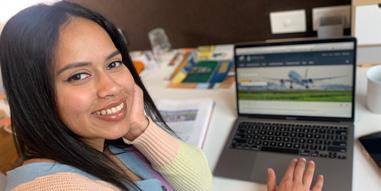
How is learning with technology expanding young minds at JustKidz Early Childhood Education Centre, Henderson?
How is tech-collaboration transforming learning and opportunities for young people at Te Ara
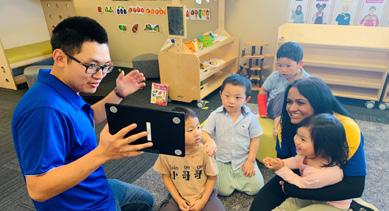
9 Tukutuku Kōrero 26 June 2023
Mānawatia a Matariki
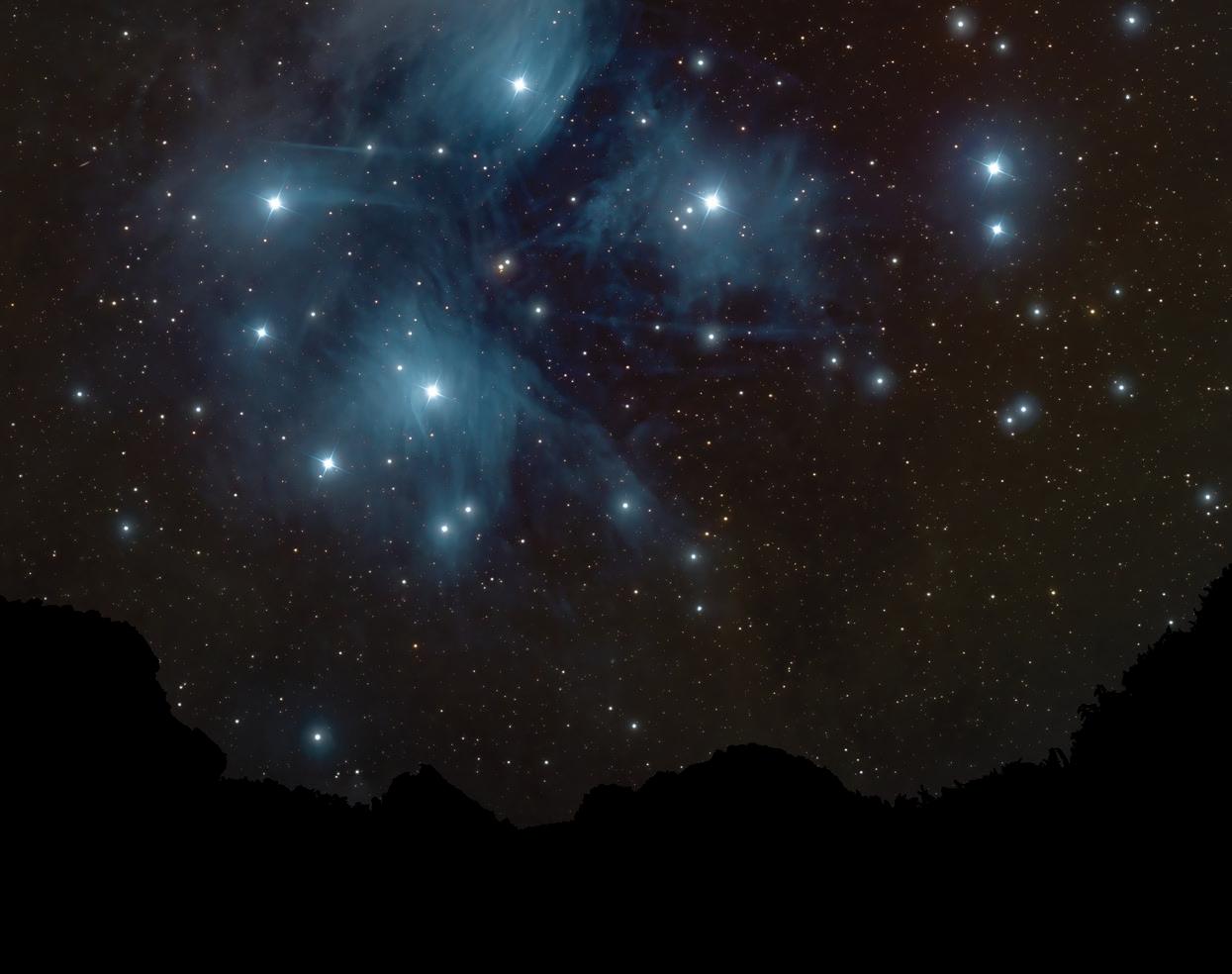
Mānawa maiea te putanga o Matariki
Celebrate the rising of Matariki
Mānawa maiea te ariki o te rangi
Celebrate the rising of the lord of the sky
Mānawa maiea te Mātahi o te tau
Celebrate the rising of the new year
10 Education Gazette gazette.education.govt.nz
TE AO MĀORI
Celebrating Matariki supports early learning services, schools and kura to reflect our unique place in the world, and in the solar system, and help ākonga develop a stronger sense of our shared national identity and histories –in unity with whānau, communities, hapū and iwi.
Mātauranga Māori is at the heart of celebrations of the Matariki public holiday. The rise of both Puanga/Puaka and Matariki signal the Māori New Year – a time for celebrating, harvesting, feasting, honouring those who have passed, and looking to the future.
In some areas, it is the rising of the star Puanga/Puaka that is the marker or symbol of the new year. Puanga/Puaka can be seen in the eastern sky and is celebrated by iwi in Whanganui, Taranaki, parts of the Far North, and parts of the South Island.
Resources
Kaiako can make use of a wide range of education resources to bring the mātauranga of Matariki to life for ākonga and whānau.
This year, celebrations for Matariki began with the launch of an exciting and rich new resource – the much-anticipated booklet, Mānawatia a Matariki.
Published by Te Arawhiti, this booklet features a series of karakia written by Tā Pou Temara and Professor Rangi Mātāmua.
These karakia honour the rising of the nine stars of Matariki and are written to equip us with knowledge that will help us to celebrate our cultural identity as a nation. Matariki is a time of reflection, gratitude, and renewal.
As we embrace Matariki and its traditions, this booklet will help to ensure the beauty and cultural importance of Matariki remains grounded in mātauranga Māori.
Written in both te reo Māori and English, this booklet will support all communities to celebrate the rising of Matariki and the Māori New Year.
Last year, Te Tāhuhu o te Mātauranga | The Ministry of Education, in collaboration with Professor Rangi Mātāmua and the Matariki Advisory Group, developed new resources that align with The New Zealand Curriculum and Te Marautanga
o Aotearoa
Aligning with iwi or hapū mātauranga, the resources and materials focus on the themes of honouring the past, present and future, with emphasis on observing how ākonga fit into
the natural world and their environmental responsibilities.
The full suite of resources includes waiata, pao, videos, e-books, ākonga worksheets, activity cards, kaiako guidance and aromatawai that are relevant from early learning to secondary schooling, in both Māori-medium and Englishmedium education.
These resources can be relevant at the time of Matariki, and indeed across all months of the year. The Matariki learnings are intended to bring mātauranga Matariki to life in an exciting way through their use of vibrant imagery and narratives. Whānau can also build their understanding of Matariki as these new resources can be used both in the classroom and by learners in the home.
The themes of Matariki
Matariki hunga nui
Matariki hunga nui is in reference to the many people of Matariki. It speaks to how Matariki calls people to gather together, to return home, to remember loved ones and celebrate with whānau and friends. It is hoped that people will take Matariki as an opportunity to return to the place they call home, and to reaffirm bonds they have with their whānau, friends and communities.
Matariki ahunga nui
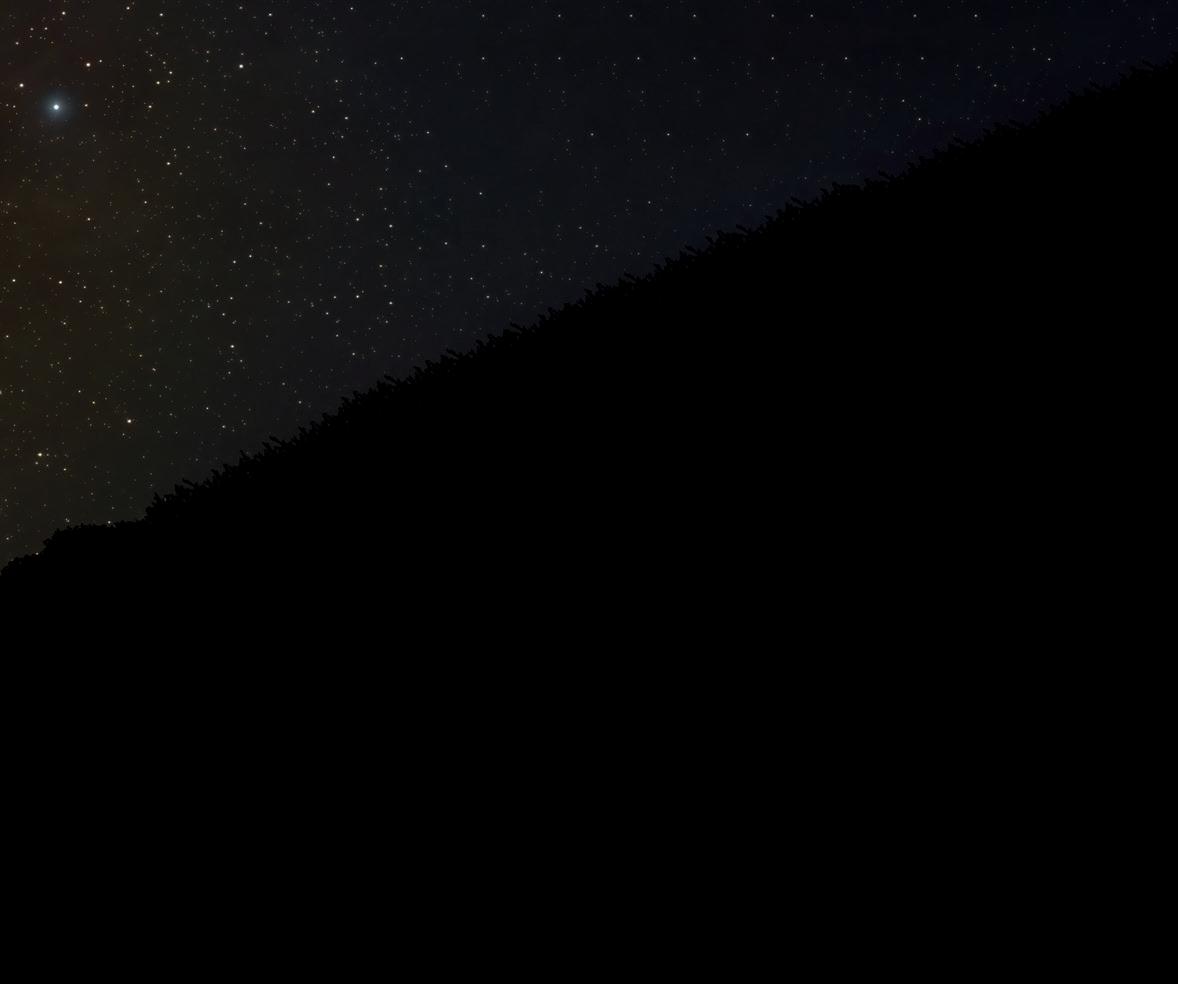
This phrase speaks of the abundance of Matariki. Food and feasting are a central element of the Matariki period, and of people coming together to eat and share. Matariki can also be seen as an opportunity to promote, celebrate and eat local, seasonal produce. It is a time where we can prepare our favourite dishes, come together to share a meal, and support local restaurants and food producers.
Matariki manako nui
Manako are wishes and desires, and traditionally Māori would send their hopes and dreams into the stars during Matariki. These wishes can be similar to New Year’s resolutions and are focused on the promise of a bountiful year to come, but the wishes and resolutions were not centred on individual wants, but on the community, wellbeing and the environment. With respect to wishing on behalf of the environment, the different stars of Matariki are associated with different environmental domains and there are many approaches to how people may pay tribute to them, by planting trees, cleaning the beach front, or refusing plastics.
11 Tukutuku Kōrero 26 June 2023
Resources
Education Gazette explores Matariki
Last year, Education Gazette released a special edition to mark our first celebration of Matariki as a national public holiday. The kōrero and mātauranga shared with us is still of great value. To read these articles and find some inspiration for your mahi, scan the QR code or visit gazette.education.govt.nz.
E Mātai Nei I Ngā Whetū – I gaze up at the stars
To help us more intricately understand the mātauranga that underpins Matariki, and the hopes of leaders within this realm for the education space, we were lucky enough to kōrero with Professor Rangi Mātāmua.
Puanga and Matariki – what is the difference?
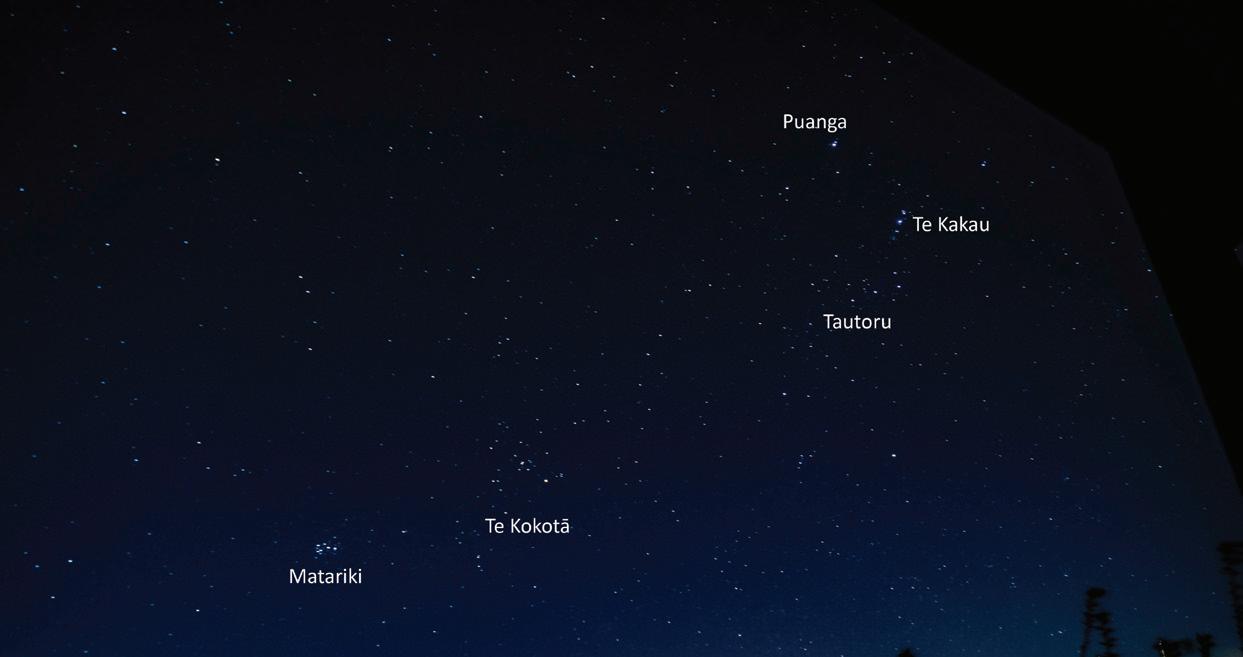
In Aotearoa New Zealand, Matariki signals the beginning of the Māori New Year. However, iwi Māori in some locations favour the rise of Puanga because Matariki sits low in the eastern horizon and is therefore not always visible from their location. Ngāti Apa kaumatua Dr Mike Paki explains.
Replenishing Tāne and connecting with te taiao
Two schools share how they connected with Matariki by planting native forests so current and future ākonga can learn from and enjoy the benefits.
Taking Matariki learning to a new level with digital technology
We caught up with Matua Craig Render, a committee member and facilitator for Digital Story Telling Aotearoa (DSTA), about how they supported kaiako to explore a range of tools to bring mātauranga Matariki to life for ākonga in the classroom.
Mānawatia a Matariki karakia booklet Te Kete Ipurangi
More information about Matariki can be found at matariki.com.

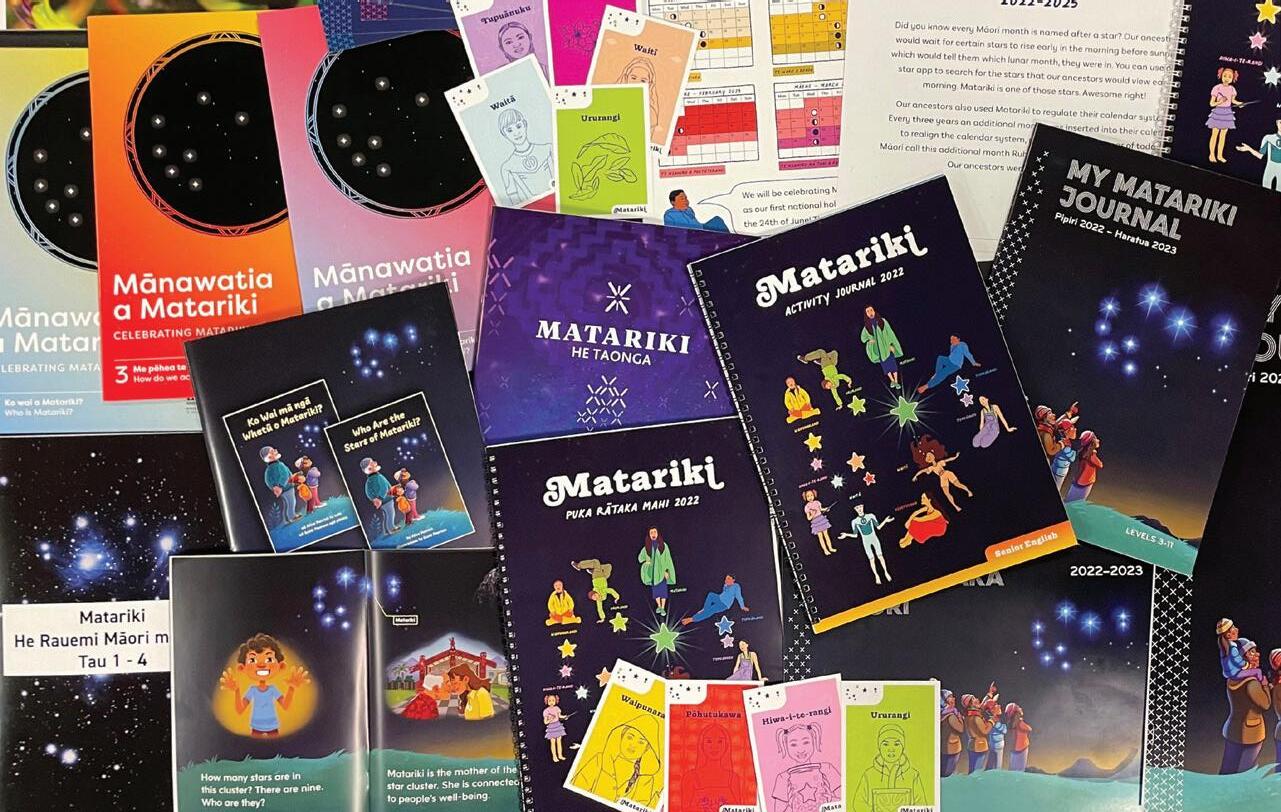
Matariki resources for kaiako Scan the QR code to find a range of resources to bring Matariki to life in your classrooms. kauwhatareo.govt.nz
An early learning journey through Matariki whetū
At Our Kids Early Learning Centre in Tāmaki Makaurau Auckland, connection to Matariki and te ao Māori is celebrated not just for a few weeks before Matariki, but all year round.
Matariki is so much more than drawing or painting stars and singing songs at Our Kids Early Learning Centre Glen Eden.
For kaiako at Our Kids, creating authentic and engaging learning experiences for tamariki and whānau around connection to te ao Māori and Matariki has led them on a journey of discovery over many years.

Centre manager Katerina Longo says first and foremost, Matariki is a time to bring whānau together to celebrate the past year and share the things both kaiako and tamariki
have been doing in relation to Matariki whetū (stars), te taiao, atua and pūrākau.
“Every year, our centre whānau comes together for an evening to share kai, stories, have an ahi (fire) and release their aspirations to the atua above. We like to write our goals and aspirations on a piece of paper and place it into the ahi,” she says.
“On this evening of celebrating Matariki, we display pictures, a video and a description of all the things we have done over the past year in relation to Matariki and the whetū.”
14
MATARIKI
“Matariki is so much more than colouring in stars and singing a song. Embed your whole centre and community in something amazing that everyone can learn from, enjoy and feel connected to.”
Katerina Longo
Managing director Anita Kumar says over time, they have been learning about the representation of each Matariki whetū and how it connects to them and the world.
“Our blog on our website explains the meaning of each whetū and then we have provided learning opportunities for our tamariki and community that link to each whetū.”
They have since evolved these experiences, by taking their tamariki out to local places in their community that are meaningful, including their local maunga, Arataki Visitor Centre and Waikumete Cemetery.
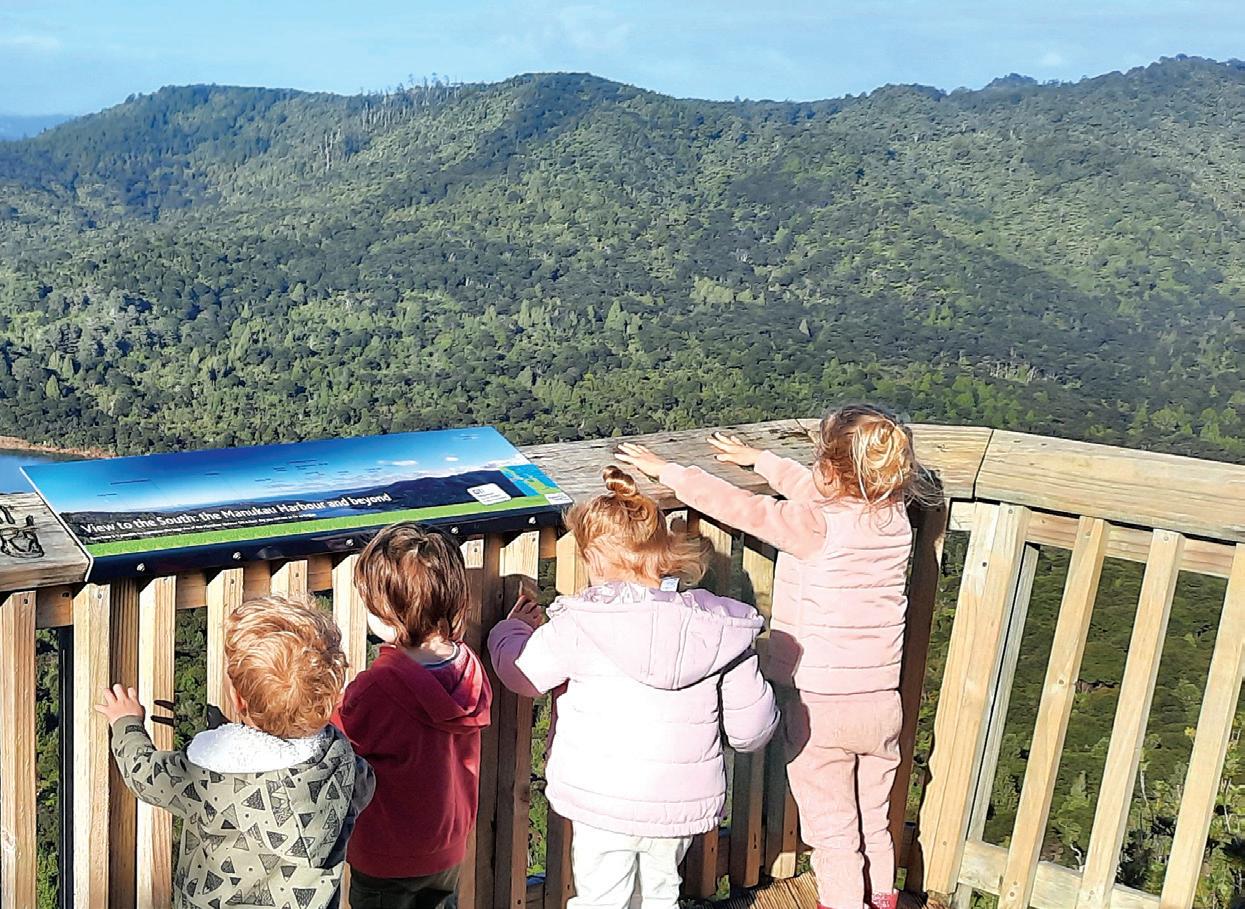
Visits to these places were planned and connected to the whetū and the local ancestors/whakapapa of the centre community.
“The carving at the Arataki Visitor Centre represents the ancestry of Te Kawerau a Maki, the centre’s local iwi and tangata whenua of the Waitakere Ranges. The ancestors are from the top: Tiriwa, Hape, Hoturoa, Maki, Te Kawerau-a-Maki and Te Au o Te Whenua. It is important for our tamariki to understand the significance of these places,” says Katerina.
They have also, in the past, done a hautapu ceremony that gives thanks back to the atua. This was a beautiful and lengthy process, she says, that the tamariki were involved in from start to finish.
Living and learning in te ao Māori
Over the years, learning experiences have evolved at Our Kids to incorporate tikanga Māori into everyday practice.
Katerina says this year, a few kaiako have been researching different pūrākau in their local community. Kaiako Laura Price has been driving a lot of this.
“The plan is to tell these stories to the tamariki, take tamariki and whānau out for a hīkoi to where these pūrākau took place and connect these pūrākau to the whetū of Matariki,” she says.
Throughout the year, kaiako also use Te Maramataka, the Māori lunar calendar, to find the different phases of the moon and plan their days, as well as looking at the energy levels.
“We do our planting and harvesting in relation to the phases of Maramataka, the Māori lunar calendar. We do rituals at Rakaunui (full moon) such as cleansing the centre, sometimes having ahi or a ceremony,” she says.
“During Whiro (new moon), we will do things like have a PJ Day, or promote slow movement, as this is a time to be close with friends and whānau.”
Katerina says Emma Parangi, the previous centre manager, was instrumental in Matariki planning work.
“So much of this was driven by her and I believe that it is important to acknowledge Emma for her work,” she says.
15
The view from a trip to the Arataki Visitor Centre.
“Although we all worked hard as a collaborative team for the Matariki planning and mahi, Emma was the one who shared her knowledge with us and I feel extremely privileged and grateful for this incredible mātauranga.”
Katerina’s biggest piece of advice for other early learning centres trying to make Matariki a meaningful learning experience is to do the research and learn as much as you can about each star.
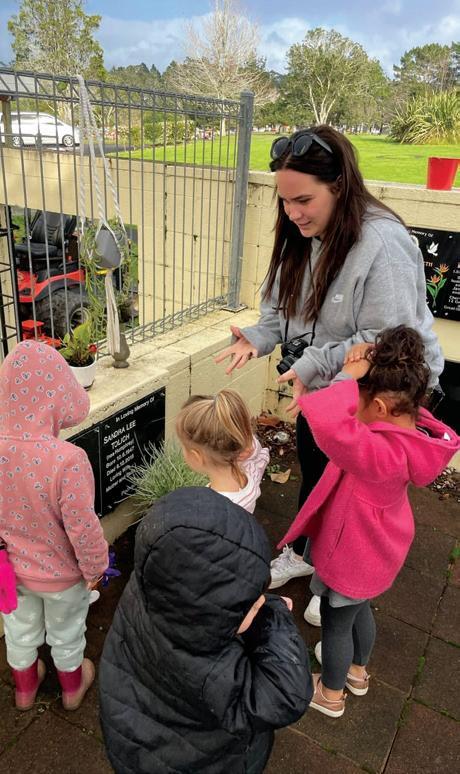
“Matariki is so much more than colouring in stars and singing a song. Embed your whole centre and community in something amazing that everyone can learn from, enjoy and feel connected to.”

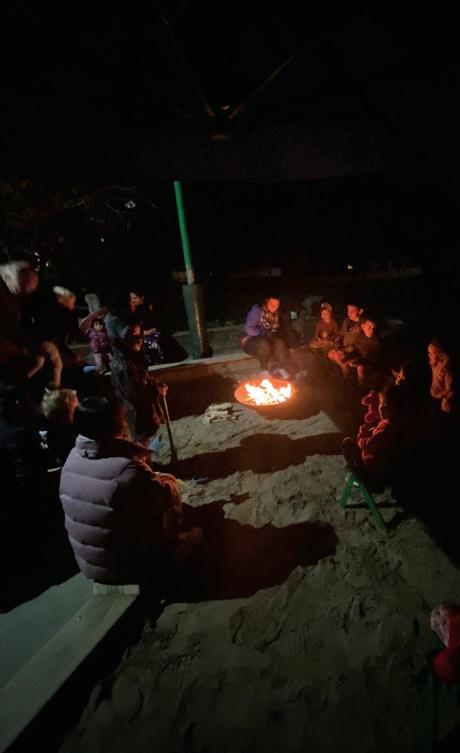
16 Education Gazette gazette.education.govt.nz
“Every year, our centre whānau comes together for an evening to share kai, stories, have an ahi and release aspirations to the atua above.”
Katerina Longo
Every year, centre whānau gather for kai and a fire to celebrate Matariki.
During Matariki, kaiako and tamariki visited local places of significance, including Waikumete Cemetery.
This year, the Matariki public holiday is Friday 14 July. Mānawatia a Matariki - Celebrate Matariki with our resources at www.reomaori.co.nz.



 Every year kaiako at Raureka Kindergarten set up a Matariki room where tamariki can spend time and learn more about Matariki whetū.
Every year kaiako at Raureka Kindergarten set up a Matariki room where tamariki can spend time and learn more about Matariki whetū.
Connecting as whānau and hapori at Raureka Kindergarten
As smoke and embers rise from the fire pit at Raureka Kindergarten in Hastings, kaiako, tamariki and whānau sing waiata to acknowledge the nine stars of the Matariki cluster.
“Waitī, Waitā, Waipunarangi, Tupu-ā-Nuku, Tupu-ā-Rangi, Hiwa-i-te-rangi, Matariki, Ururangi, Pōhutukawa, e iwa ngā whetū o Matariki e…”
Matariki at Raureka Kindergarten is a time to pause, reflect and count their blessings.
Aroha is at the centre of all that they do. Kaiako pride themselves on teaching from the heart using Mana Enhancing practices to build on each of their tamariki’s sense of identity and belonging.
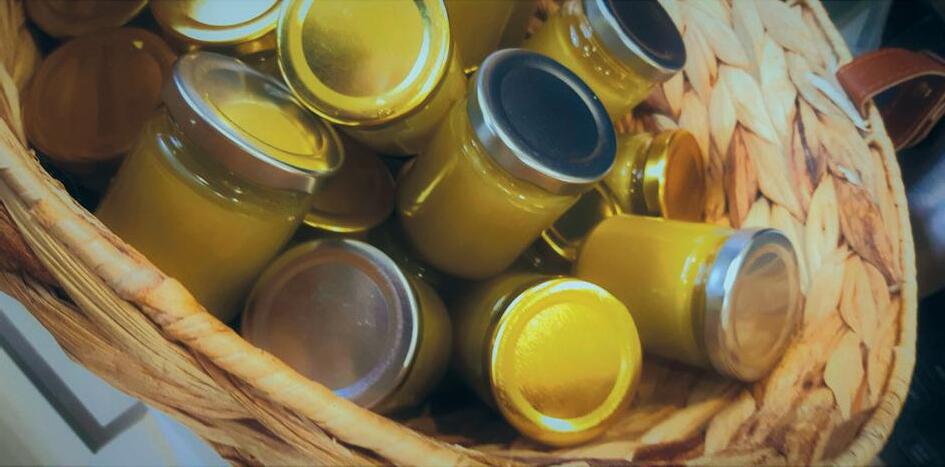
A big part of knowing who they are and where they come from is learning about significant events like Matariki. At Raureka, Matariki is also a special time to come together and celebrate whānau and community.
Head teacher Natalie Reid says kaiako and tamariki
value deeply the importance of Matariki as the beginning of the Māori New Year and see it as a fresh start.
Preparation for Matariki at Raureka begins by setting up and creating a Matariki room for the tamariki.
A small blacked out room illuminated with fairy lights to create the illusion of a starlit sky, is just one of the perfect Matariki experiences for tamariki at Raureka, says Natalie.
The room is also filled with pukapuka, puzzles and other resources that promote and encourage te reo Māori and te ao Māori.
19 Tukutuku Kōrero 26 June 2023
EARLY LEARNING
Kaiako prepare meaningful gifts for tamariki and whānau including kawakawa balm.
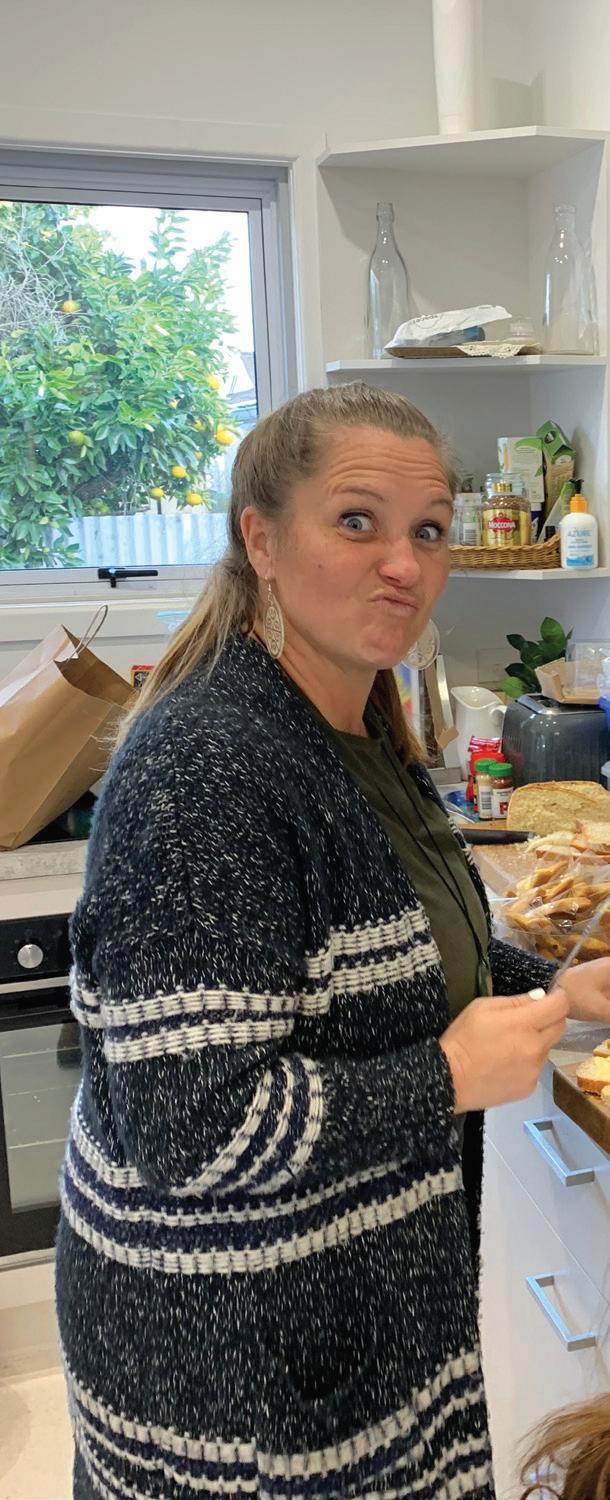

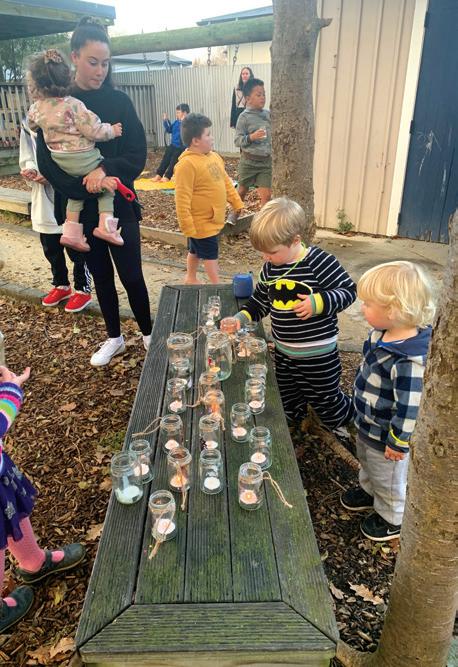
20 Education Gazette gazette.education.govt.nz
Top left: A highlight of Matariki night is spending time around the fire pit and singing waiata.
Bottom left: During Matariki, kaiako and tamariki light candles in remembrance of loved ones who have passed away.
Right: Head teacher Natalie Reid prepares kai and rewana bread for their special Matariki whānau evening.
Coming together as whānau
This year’s Matariki theme is ‘Matariki Kāinga Hokia –Matariki calls you home’, so it is fitting that on 14 July when Matariki will be officially marked around Aotearoa, the Raureka Kindergarten hapori will come together for a whānau evening.
“We all come together to share a delicious kai or soup and rewana bread and normally have different activities our whānau can take part in with their tamariki such as weaving or mahi toi,” she says.

One highlight of the night is spending time around their fire pit and singing waiata and sharing kōrero.
A crowd favourite, Natalie says, is a national favourite of Aotearoa, composed by Ngāti Kahungunu Anglican priest Wi Huata, Tutira Mai Ngā Iwi.
Reflection and remembrance
Before the end of their Matariki evening they take a moment to remember those loved ones who have passed on by lighting individual lanterns and walking around their outside environment while listening to calming music.
“Here at Raureka we value this tradition as it brings us together and strengthens the sense of community and whakawhanaungatanga,” Natalie says.
Showing gratitude is also an important part of the Matariki journey. Kaiako prepare meaningful gifts for tamariki and whānau.
“We bake star shaped shortbread for our tamariki and their siblings along with their own little poi. And we use leaves from our kawakawa tree to make kawakawa balm for our whānau.”
Natalie says by celebrating Matariki she believes they’re holding onto traditions of their tīpuna and handing down the knowledge to future generations.
“This is a time of year we look forward to and one we hold close to our hearts.”
21 Tukutuku Kōrero 26 June 2023
“Here at Raureka we value this tradition as it brings us together and strengthens the sense of community and whakawhanaungatanga.”
Natalie Reid


22 Education Gazette gazette.education.govt.nz
Tamaiti perform a traditional Samoan dance.
Māori and Pacific communities collaborate to build unique fale

It’s been an extremely wet week in Tāmaki Makaurau, but the sun comes out at exactly the right time for Glen Eden Primary School’s big event. Ākonga are dressed to perform and kaiako hand out lei woven in school colours to the parents and dignitaries streaming through the gates.
The star of today’s event is a fale in the school grounds, a breathtakingly beautiful structure which has been a two-year labour of love by artists and iwi.
Sāmoan designer Lama Tone designed and built the fale; Cook Islands kai whakairo (master carver) David Maruariki carved the pou; and Tongan artist Filipe Tohi used the traditional art of lalava to create the decorative lashings/ bindings. Each lashing is unique and tells a story such as of the fishing nets or the stars.
Partnering with Mana whenua
Before any work began, the designer and school principal met with Mana Whenua Te Kawerau ā Maki to obtain permission.
“I was not going to build this fale without the blessings of mana whenua first,” says Lama.

Principal Donna Soljan treasures memories of the process, right from concept.
“It was a very special experience for me to sit in on meetings with people who have so much knowledge – Lama, David, and Robin Taua-Gordon, Pou Tangata at Te Kawerau ā Maki. It was a privilege to listen to their histories and the fale being planned around that.
“So much thought went into what was appropriate to include in carvings and design. They worked so well together; it was true collaboration in action.”
23 Tukutuku Kōrero 26 June 2023
In what is believed to be a first, a fale co-designed by local Pacific and Māori communities has opened at Glen Eden Primary School in West Auckland.
MĀORI AND PACIFIC
The visible outcome of partnership with Māori is a red rafter in the roof of the fale and one pou that is painted red. It points in the direction that is specific to mana whenua and references the red of the local soil. Carvings start at the bottom with designs representing tipuna of Te Kawerau ā Maki and continue up to represent journeys from all the Pacific Islands.
“It was a reciprocal relationship of whakawhanaungatanga or vā,” says Lama.
“Mana whenua gave us blessings to build this here and it was only fair we gift them with a pou, a heke and the constellation of Matariki/Matalai’l lashed through stones arranged on the ceiling.”
The fale roof is clad with black slates (rubber shingles) and represents an upside-down hull. Pacific lashings decorate the rafters, and locally sourced kohatu (stones) on the ceiling depict the Matariki constellation. Pou are lashed together with ‘afa, a plaited sennit rope from Samoa which is handmade from dried coconut fibre.
From the heart
Carver David, who has a child at the school, spent many hours working on the fale and says it’s a work that was “done from the heart”.
“For me, this is an important work. This is something our future generations can learn from.”
Donna says the fale is “an absolute blessing for our school. It tells you that when you come in, you are at a school in Aotearoa and in Tāmaki Makaurau, a city with more than 300,000 Pacific people.

“I have visited schools overseas and there’s a sameness about them the world over. It got me thinking about how you might be able to tell where you were in the world, the moment you walked into a school. And I think this fale shows our visitors where they are.”
More than 40 percent of ākonga on the roll at Glen Eden Primary identify as Pacific, and a further 27 percent as Māori.
“It has taken more than two years because of all the (pandemic) ‘start-stops’, and some people have wondered what was taking so long,” says Donna.
“But along the way I realised that it’s so much more than a building, it’s a work of art and that art is finished when it’s finished. There are no timelines, it’s just done when it’s done.”
The fale was opened with a stunning ceremony. Tamariki performed haka and waiata at the pōwhiri which was followed by a traditional Pacific welcome including an ‘ava ceremony and siva.
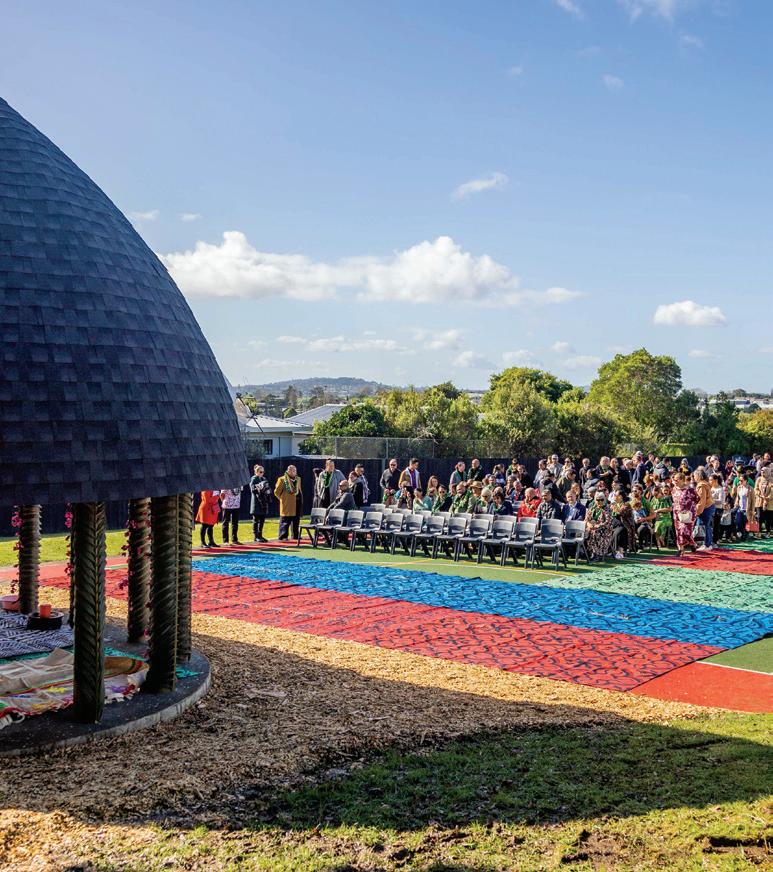
gazette.education.govt.nz
Samoan designer Lama Tone (left) with Robin Taua-Gordon, from Te Kawerau ā Maki, and Cook Islands kai whakairo (master carver) David Maruariki.
A place for community
The fale, big enough for an entire class, is intended for learning and play.
“It’s a place for everybody to come together. It’s a place for all peoples, but it’s also significant in that the lashings tell stories. It’s a place for us to take children to teach them so many things. It’s about voyaging, it’s about the narratives of the Pacific, it’s a place of learning,” says Donna.
“The fale is a storyteller, a custodian between the community and the school. It’s an ancestor from Te Moananui a Kiwa, the Pacific Ocean.”
The fale is also a gathering space for visitors.
“My dream is to drive past on a Saturday and see a family sitting in there having a picnic while children play on the basketball court. Our school is open on weekends, and we really want our community in.”
• STEMSTARS brings STEM to life through the power of storytelling and fun activities.

• Eight exciting ‘STEM Labs’ with activities suited up to Year 6.
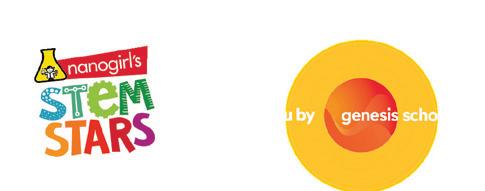
• Everything teachers need to deliver STEM lessons with confidence. Find out more at schoolgen.co.nz/stemstars

An
STEM resource from Genesis
amazing new
School-gen & Nanogirl Labs
“Mana whenua gave us blessings to build this here and it was only fair we gift them with a pou, a heke and the constellation of Matariki/ Matalai’l lashed through stones arranged on the ceiling.”
Lama Tone
Tamaiti wore traditional dress to perform for the 200-strong audience at the fale opening.
 One year old William joyfully experiments with a tī kōuka leaf.
One year old William joyfully experiments with a tī kōuka leaf.
“Now that we know a bit more about what space means to us here, we are looking at it quite holistically. We’re not just looking at the physical elements of our environment, we’re looking at connection.”
Laraine Tupata
Tī kōuka leaves energise exploration in early learning
An Auckland early learning service has been rewarded for its mahi exploring the regenerative learning potential of an everyday natural material – the leaves from tī kōuka (cabbage trees).

The Kererū team from Kids’ Domain Early Learning Centre has won a 2022 NEiTA (National Excellence in Teaching Awards) Seed Award and a $10,000 professional development grant in the awards, which received a record number of almost 2,000 nominations from across Australia and New Zealand.
Kererū is one of two sensory-rich spaces for infants and toddlers aged between three months and three years.
With Pukekawa/Auckland Domain on the boundary, tī kōuka leaves fall into the grounds of the Grafton early learning service. Prior to embarking on the inquiry to
explore the learning opportunities of the leaves, staff would clear the leaves away.
They decided to observe more closely the interactions between tamariki, kaiako and materials and by dividing into rōpū, kaiako gained a deeper understanding of each age group. They were able to observe and learn how children connected with the cabbage leaves in their own unique ways, which helped to inform an approach to co-research and tailor experiences to meet each group’s strengths and interests.
27 Tukutuku Kōrero 26 June 2023
EARLY LEARNING
Kaiako Amita Khanna has a playful encounter with a tamariki in Pukekawa/Auckland Domain.
Focus on space
“We had engaged in multiple inquiries that have served as the foundation for our practice in understanding children, their learning processes, and how we respond to their everyday needs,” explains Kids’ Domain director, Bridgette Towle.
“These previous inquiries, ‘embracing the spirited toddler’ and ‘open-ended materials’, have helped us deeply understand our tamariki and their unique ways of connecting to their environment and the people around them.”
The concept of space at Kids’ Domain emerged as a response to:
» A desire to respond thoughtfully to tamariki in a holistic way that includes the interactive elements making up their environment – people, places, things and everything in between.
» The importance of adapting to the ever-changing and diverse dynamics and characteristics of infants and toddlers.
» Helping kaiako to create the conditions for an age group experiencing rapid developmental changes, while navigating everyday care routines and fostering positive interactions among tamariki.

» An influx of new children following the first Covid lockdown.
“Space is a big concept and initially when we were looking at space, it wasn’t physical – space is more about relationships between everything. We wanted to look at space but it’s too broad, so it really made us hone in on something in particular to actually see the possibilities,” says Laraine Tuaputa, who was head teacher of Kererū during the year-long inquiry.
“We hosted a whānau night where families came in and played with cabbage tree leaves and they offered other perspectives of how they might weave in their own stories and creativity into our space with the cabbage tree leaf. We are a very diverse community. From that whānau night we got to see their creativity, but that also gave us ideas,” she explains.
Soon, tī kōuka leaves could be found entwined between resources. These experiments provided valuable insights into children’s engagement, curiosity, and exploration.

Connecting through lockdowns
The inquiry took place in 2021/2022 after the first nationwide Covid lockdown and during further lockdowns in Auckland. Through games, stories and art, pēpi and toddlers learned that tī kōuka has a circular life force (mauri). Together with whānau, they learned about connection, resilience and their own place in an interconnected world.
“We took cabbage tree leaves out to the Domain and put them around our different spaces. The cabbage tree leaves came to the fore along with the tamariki, again, looking at those connections in relation to material and space,” says Ripeka Page, current head teacher of Kererū.
28 Education Gazette gazette.education.govt.nz
Parent Phyllis Phukubye-Johnson explored the potential of tī koukā leaves at a whānau night.
Kids Domain kaiako, clockwise from top left: Ripeka Page, Eileen Smith, Ritu Khanna, Amita Khanna, Laraine Tuaputa.
“Just before lockdown we were all buzzing with this amazing energy around this leaf and around each other. The most important thing during lockdown was to keep that energy alive.
“From that we went into lockdown, and thought ‘how as a team can we creatively engage with our whānau and tamariki at home through the cabbage tree leaf?’ We used StoryPark and created ‘The big cabbage tree leaf hunt’.
“We were very surprised to see how many cabbage trees there were around Auckland, and we learned so much more about the cabbage tree leaf as a material, even its history, just from interacting with our families. We feel very connected .to the cabbage tree leaf!” laughs Ripeka.
Empowering teachers
Tī kōuka leaves became an object of investigation and generated energy for kaiako by creating momentum and transformation and strengthening how they collaborated as adults.
“Considering our learning process got teachers to think outside the box; it stretched their capacities to see themselves as co-leaders. We’re trying to ignite the passion, centre-wide, for thinking and inquiry and everyone’s ability from a non-hierarchal and inclusive perspective to share in this process; that it’s not top down, but everyone’s involved.
“This was an extraordinary experience in a very hard year where the whole group of teachers became empowered and energised,” says Ripeka.
Through the process, the notion of conscious collective energy emerged and was actively woven throughout the inquiry. This energy was described as the shared intentions, ideas and knowledge that kaiako, tamariki, and whānau created together.
Future thinking
In 2022, the encounter with tī kōuka saw the focus shift to the potential of Pukekawa/Auckland Domain. Now that inquiry has finished, attention has turned to internal spaces in 2023.
This year’s inquiry question is, ‘How can we curate our space for tamariki to ignite new potential?’ Using the knowledge gained from past inquiries, kaiako are curious to continue to learn about the unique characteristics of pēpi, in-betweeners and toddlers.
“We’ve brought everything that we’ve learnt from Pukekawa and everything we’ve learnt from our pēpito-toddlers group into how to create spaces that are transformative and fluid for this age group. We’re back where we started but we’re looking at it through a whole new perspective.
“Now that we know a bit more about what space means to us here, we are looking at it quite holistically. We’re not just looking at the physical elements of our environment, we’re looking at connection,” concludes Laraine.
Learning outcomes
Looking at the principles of Te Whāriki the learning outcomes of the tī kōuka inquiry included:
» Mana Atua: Tamariki were empowered; their potential was harnessed, and they developed a sense of confidence as they discovered and developed their own capabilities in their own time and space.

» Mana Aotūroa: The process of inquiring with just one material in fun and playful ways harnessed the creativity and imagination of tamariki. Kaiako saw the multiple ways children came to know tī kouka well and saw new and different possibilities of how to create opportunities for further interaction.
» Mana Reo: The inquiry tapped into the pedagogy of relations. Tamariki deepened their understanding and developed meaningful relationships between themselves and people, places and materials as they explored the cabbage tree leaves.
» Mana Whenua: By having different opportunities to explore one material in different spaces, tamariki developed a rich connection and understanding through investigating the properties and potentials of tī kouka. These interactions deepened their understanding of the natural world and sense of connection with their environment.
29 Tukutuku Kōrero 26 June 2023
New resource explores whakapapa, identity and belonging

30 Education Gazette gazette.education.govt.nz
CURRICULUM RESOURCES
A visually stunning big book Painting Stories about a mural in Roxburgh, Central Otago and accompanying teacher support material for ākonga in Years 1 to 3 has just been released.
Photo by Stacey Simpkin, copyright © Crown.
Painting Stories is designed to be read aloud to ākonga and the teacher support material suggests ways ākonga can make connections with the people, events, and changes in their own rohe.
The resource has been created to support the refreshed te ao tangata | social sciences learning area, building on key concepts such as whakapapa, identity, belonging, manaakitanga, and tūrangawaewae. It also connects to literacy and language skills in both te reo Māori and English.
The focus of the book is a Roxburgh mural created by artists Hayley King and Ross Liew (their artist names are Flox and TrustMe).

The mural is designed to foster a sense of belonging for seasonal workers working in the Teviot Valley and recognises the waves of migration and settlement that have shaped the region.
Narrated by Hayley and Ross, the book unpacks the symbolism in the mural. The symbols at the base of the mural point to a local pūrākau – the legend of Kōpūwai – while the golden mountains at the top represent the dreams of Chinese miners.
Thistles are painted to represent the Scots. And sprouting coconuts, crabs, and birds reflect the home countries of seasonal workers, many from the Solomon Islands and Vanuatu.
At the centre of the mural and the stories in the big book, is the Mata-au, the powerful awa that runs through the Teviot Valley. The river formed part of a trail to the West Coast that Ngāi Tahu people living on the east coast followed to source pounamu. There was also a bird hunting camp near Roxburgh.
Māori connections with the rohe are expressed through the pūrākau of Kōpūwai, a giant who lived near the river with his pack of ferocious two-headed dogs.
Ross says the mural shows Roxburgh is a place that’s important to lots of different people and cultures. He says during the gold rush people from all over the world came to the area, including many Chinese miners. Some made money and then returned home to their families while others stayed and made Aotearoa their home.
Painting Stories also provides maps of the area to show where these places are and the trails people used.
At the end, Hayley asks ākonga, “Who are the people who are connected to your community? How could you help people who live in your place feel like they are welcome and belong?”
Teacher support material
The teacher support materials that accompany Painting Stories provide sets of activities that look at these questions and draw on the themes of whakapapa, identity, belonging, manaakitanga, and tūrangawaewae.
This material will help kaiako understand the new elements of “Understand, Know and Do” statements and bring them to life through this rich and meaningful content.
They look at:
» the meaning of place names to help ākonga explore the concepts of whakapapa and tūrangawaewae
» how people express their culture through stories about the past to help bring the concepts of culture, identity and tūrangawaewae alive
» the way people use symbols to express their connections with a place or their culture
» the changing ways that people live and work in a rohe
» working in groups to create a social action plan to help all people in the school community feel welcomed and valued by exploring their wants, needs and their decisions.
The support material also provides links to external resources such as a Ngāi Tahu values webpage that can be used to make comparisons with school values and a School Journal retelling of the story of Kōpūwai by Brian Pōtiki.
Schools and kura started implementing the Aotearoa New Zealand’s histories and Te Takanga o Te Wā content at the beginning of 2023. This content is embedded in the te ao tangata |social sciences learning area which was the first to be refreshed and was released in November 2022.
It’s not compulsory for the rest of the refreshed curriculum to be implemented until the beginning of 2027.
Teacher support materials and a PDF of Painting Stories can be found at ssol.tki.org.nz
26 June 2023
“Who are the people who are connected to your community?
How could you help people who live in your place feel like they are welcome and belong?”
Copyright © Hayley King/Ross Liew.
Hayley King
STUDENT AGENCY
Student-led mahi turns bike-trail dream into reality
Not many schools and kura have one and a half acres of spare land at their disposal but Oruaiti School did. They gave their tamariki total agency to transform it into a legitimate, four-track mountain-bike trail.
An enviro class of Year 5 and 6 students at Oruaiti School in the Far North is working on the finishing touches of an 18-month mountain-bike trail project, which has seen tamariki lead and manage the entire process from design to build.
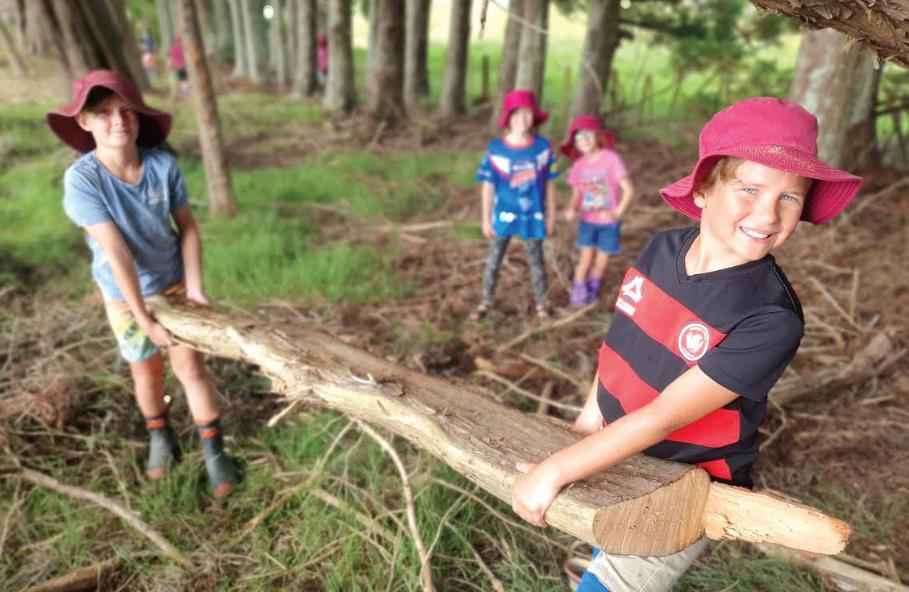
Principal Diane Bates says they received funding after winning the 2021 Prime Minister’s Award for Sustainability and Education so they asked the students what they would like to do with the money.
“As it was the students who helped us win the award, we wanted the funding to go back to them, and go back to something for our local school environment,” says Diane.
She says it’s been an empowering learning opportunity that has seen tamariki blossom.
“The students have done all the work, from planning, to contracting and even hauling logs, so it’s neat to see it all come to fruition,” she says.
Curriculum links incorporated throughout Planning started at the beginning of 2022 and most of their learning time has been spent working directly or indirectly on the project.
As part of the project management, students made phone calls to various contractors including construction and fencing companies, and digger operators.
Enviro class teacher Rob Arrowsmith says the confidence they demonstrated in dealing with stakeholders was impressive.
Every Friday students cleared the debris in the pine forest.
“They are incredibly articulate and able to communicate in such a way that everyone who works on the project is impressed because the students are so confident in themselves and their ability,” he says.
“My job is to guide them, and make sure we stay on track – excuse the pun!”
Diane and Rob say curriculum links are all deliberately integrated throughout the project, and include reading, writing, maths, science, te reo Māori, and art.
“Some ākonga might struggle with learning in the classroom but when they’re trying to measure square metres and work out how much the contractor is charging per square metre, the learning they are getting in such a real way is amazing,” says Diane.
In the classroom, lessons are tied back to what they’ve been doing on the bike trail project. Each day’s lesson is prepared based on the success and ‘next steps’ from the previous day.
“They’re overseeing all aspects of the project, which is accelerating their learning,” says Rob.
“We work together to plan our next steps, and everything we do is pre-agreed by them. It’s all about mastery and ownership.”
For example, students were asked how they would fit 40 bikes in a 20-foot shipping container. Through measuring out a template, and problem solving, they discovered they could store some on the floor, and hang some vertically on the walls.
Community effort
The trail, which is set to open to the whole school and community later in the year, has four yet-to-be-named tracks: beginner (pump track); advanced (250 metres); expert (200 metres); and extreme (200m), which range in skill and ability from Grade 1 (easiest) to Grade 4 (extreme).
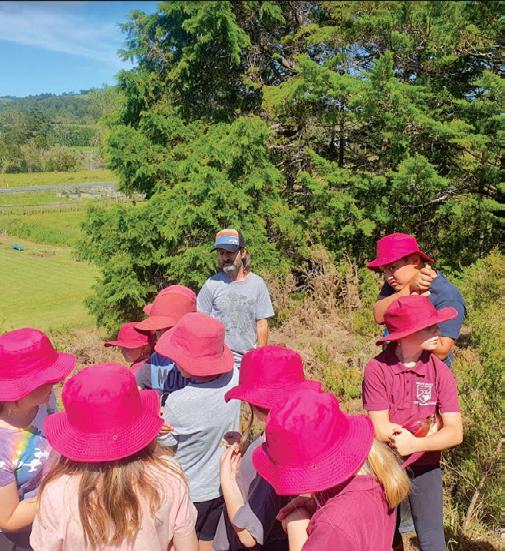
Students have secured 10 bikes, which were gifted by Programmed Facility Management (PFM), and received funding for another 23. The Oxford Sports Trust also gave students funding for container storage.
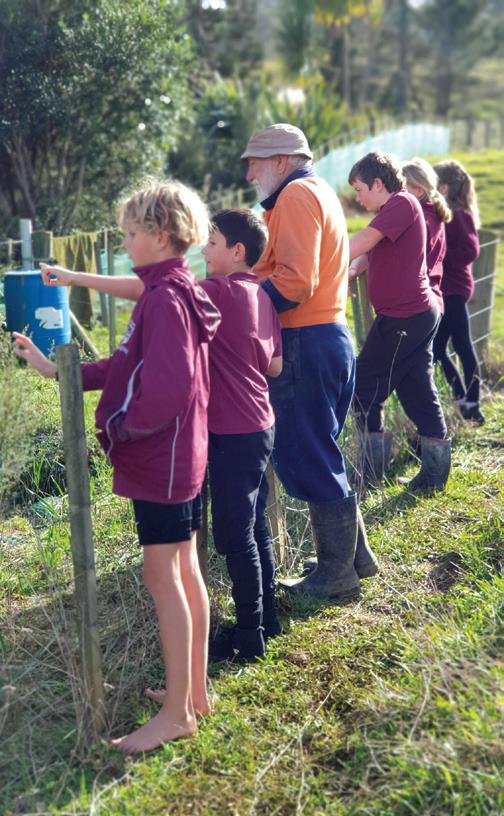
33 Tukutuku Kōrero 26 June 2023
“Some ākonga might struggle with learning in the classroom but when they’re trying to measure square metres and work out how much the contractor is charging per square metre, the learning they are getting in such a real way is amazing.”
Diane Bates
First site meeting with Ryan the track builder.
Sam sharing his ideas with Ivan the farmer.
As the wider community is getting behind the project – with local farmer Ivan Turner offering his digger and skills, and Ryan Lovett overseeing the track design –Diane says the school plans to eventually open up the track for the community to use.
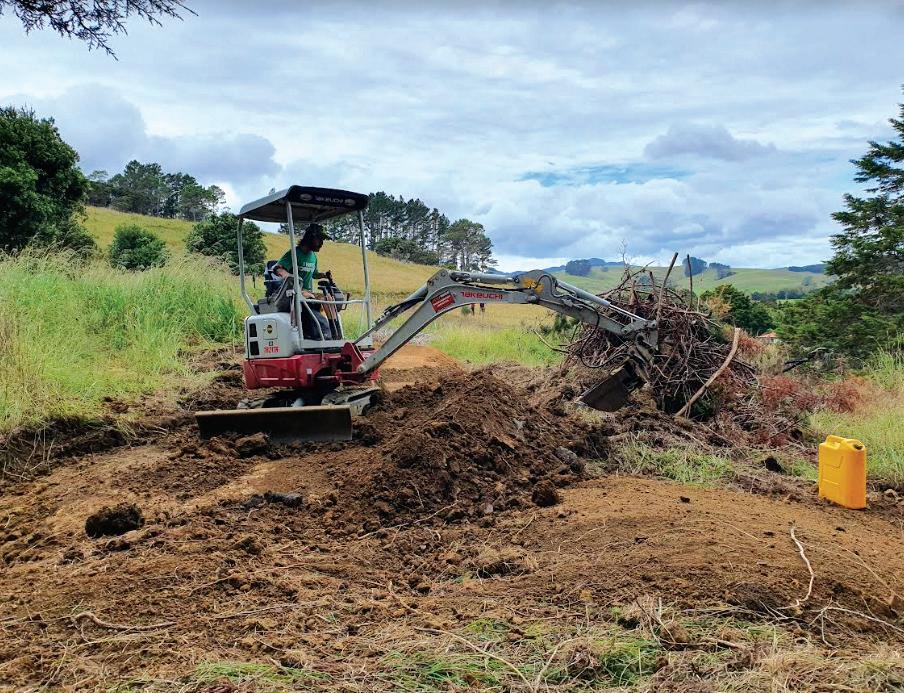
“We’ve got the space and the school is in a perfect position, so it’ll be great to give the community access too,” she says.
Weather won’t hinder plans
The bike trail hasn’t been without its challenges, with bad weather earlier this year delaying the start of earthworks.
“We’ve been quite fortunate though, with timelines and contractors’ availability,” says Rob.
He adds that the challenge now will be keeping up the momentum throughout the winter months, as much of the finishing work will need to be put on hold due to the slippery clay ground.
While much of the land for the trail has been cleared, students have begun planting mānuka and will continue planting next year.
Come term 4, the children will be able to use their new track for an entirely new form of learning – technical bike skills.
“As well as acquiring mountain-bike skills, they’ll also be learning patience and respect for each other and the equipment,” says Rob.
Student voice
Students of Oruaiti School explain to Education Gazette what made the project memorable for them:
» “Because the hard work was worth it.”
» “Stepping up a level and having fun.”
» “We helped the environment.”
» “Testing the bike track was fun and purposeful.”
» “We ran the bike park project.”
» “We do it as a class.”
» “Everyone helped to make a difference.”
» “We challenged ourselves to be successful.”
» “When you have been in Rob’s class you realise anything is possible if you work hard enough and persevere when it is tough.”
» “The feeling of achievement.”
» “Learning outside. Because it is hands-on.”
Read this article online to access the school’s Google presentation on the project. Earthworks being completed to prepare for the bike track.
34 Education Gazette gazette.education.govt.nz
Students helped put two more culverts in to make the bike track exit and the Grade 1 pump track.
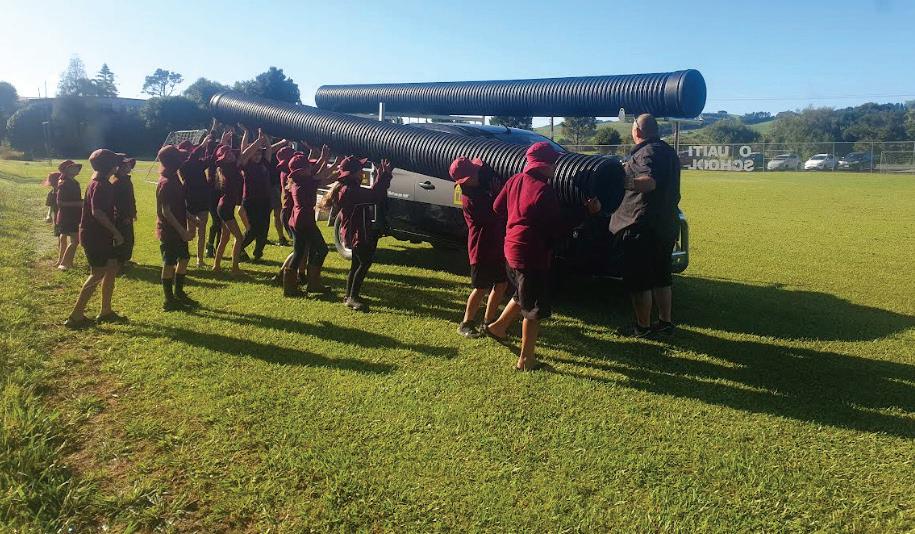
35 Tukutuku Kōrero 26 June 2023
“When you have been in Rob’s class you realise anything is possible if you work hard enough and persevere when it is tough.”
Student
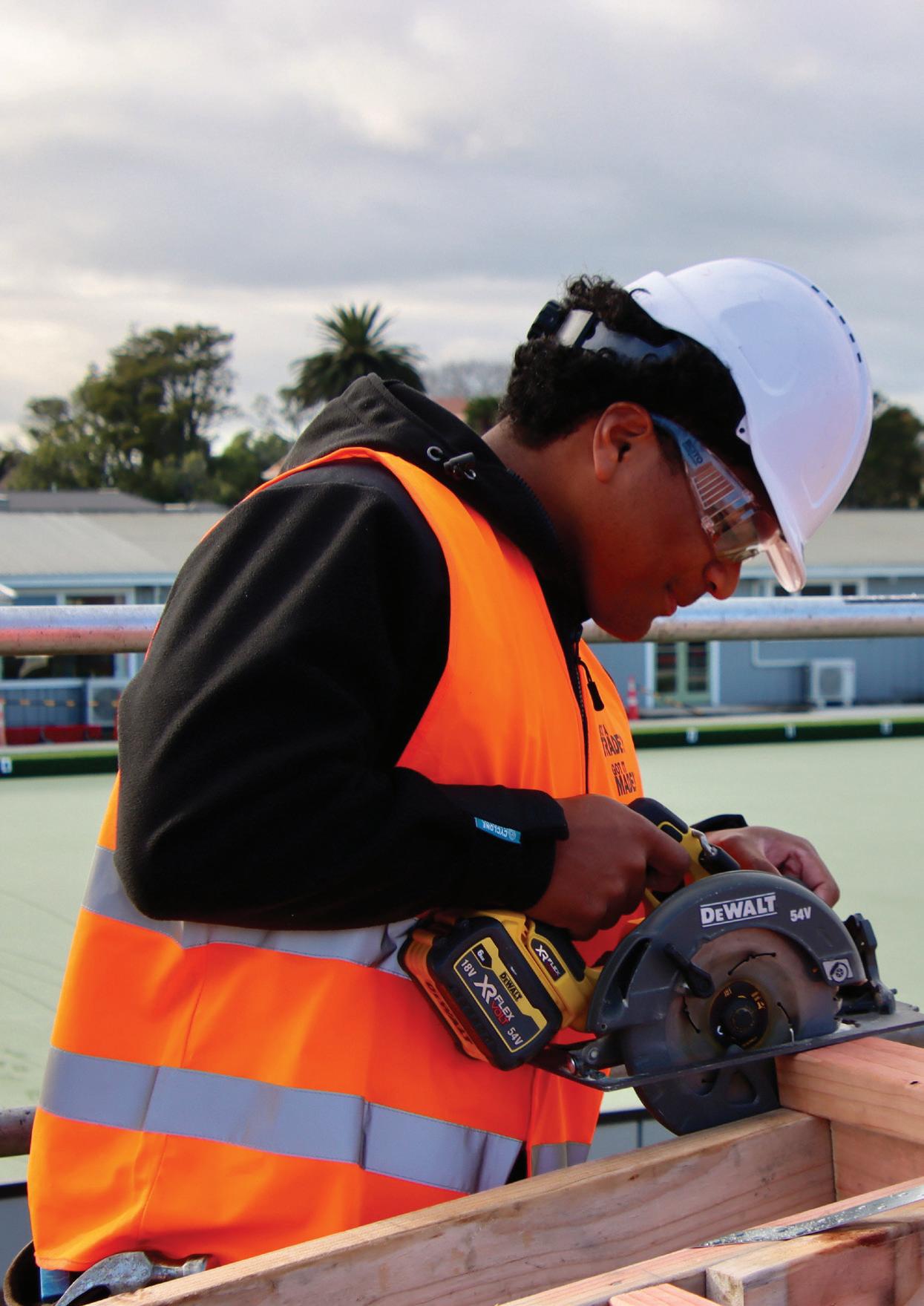 All the images in this article were supplied by Palmerston North Boys' High School, and show their purpose-built outdoor construction site in action.
All the images in this article were supplied by Palmerston North Boys' High School, and show their purpose-built outdoor construction site in action.
Elevating transitions between education and employment
Palmerston North Boys’ High School, in collaboration with the Ministry of Education and the Primary Industry Training Organisation, has developed a model that provides individualised learning programmes linked to their local curriculum and career pathways for students.
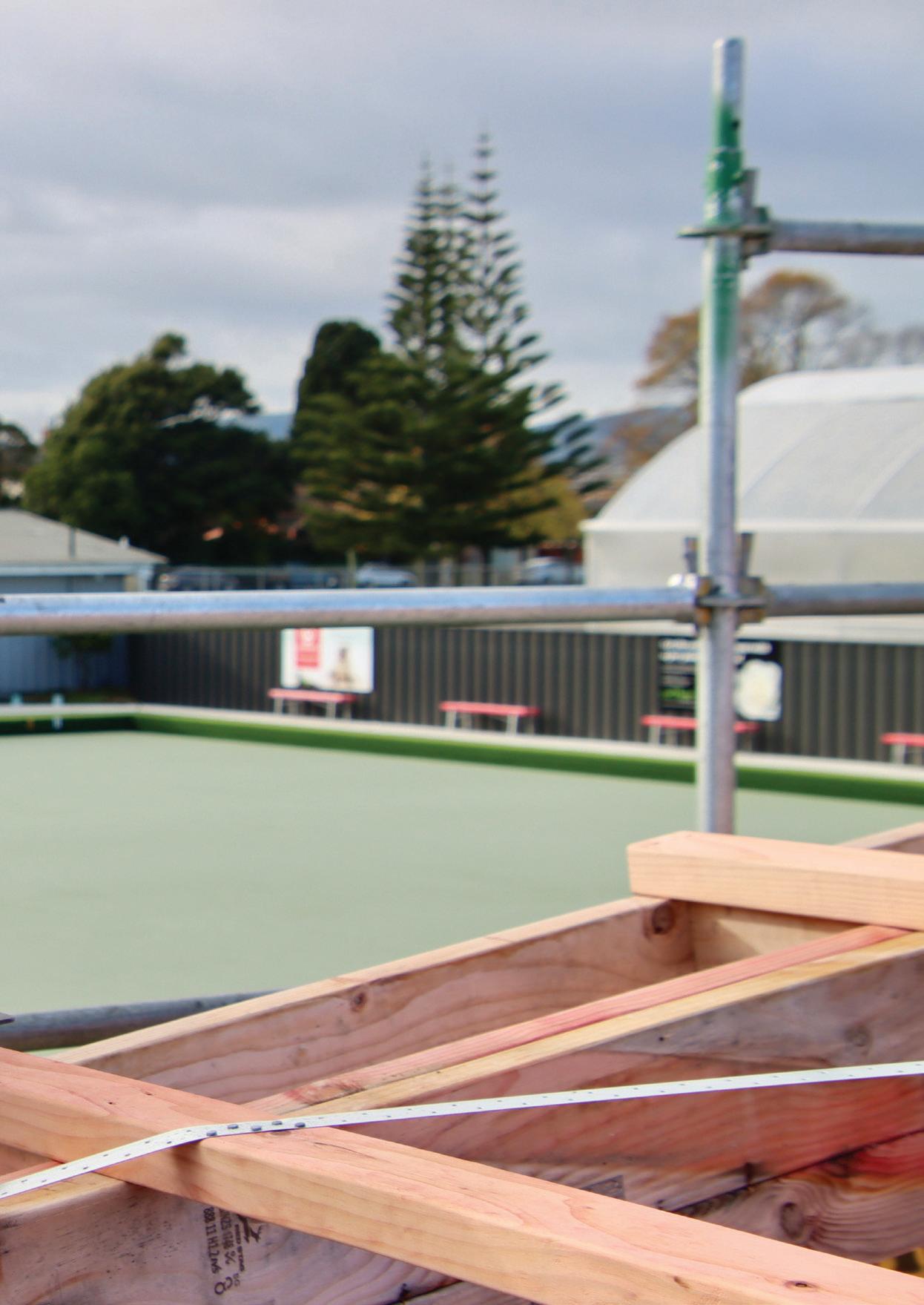
Local farms, construction companies, barbers, mechanics, and trades academies. These are some of the connections made by Palmerston North Boys’ High School (PNBHS) to build pathways to future training and career opportunities, which is empowering students to stay engaged with their secondary school learning. They have now ramped up this offering with the introduction of a homeroom model.
PNBHS introduced their innovative homeroom model in response to changes made to the National Certificate of Educational Achievement (NCEA) and the Tertiary Education Strategy (TES) Objective 4, Future of Learning and Work. These changes aim to support personalised career pathways that lead to more effective transitions between education and employment for ākonga.
Careers advisor David Barwick says the school has been involved with vocational training for around 10 years.
“Vocational training really started 10 years ago with Gateway. In the last five years we have been ramping that up with Trades Academy programmes, which every year have been increasing in numbers. This year we’ve got 98 students in Trades Academy programmes and 60 involved with Gateway.”
The programmes have evolved over the years, including new connections with providers such as UCOL offering training in areas such as barbering and chef work. But one area that has grown and developed significantly is their relationship with the Primary Industry Training Organisation (PITO).
“We have had a close connection with the PITO for the last few years. We’ve got 33 students with them. That connection really started properly last year when we piloted a new scheme.”
37 Tukutuku Kōrero 26 June 2023
PATHWAYS
Growth in agricultural pathways
Jason Cudby, who is the school’s agriculture and horticulture teacher, has been one of the main leaders for the new model. He comes from a farming background and has a small station that students can visit. Jason explains how a week might operate for the programme.
“Our Year 13s go out on Mondays and Thursdays to a range of farms all over the Manawatū. They get a real sample, they get hands-on training, with a range of different types of farming. When they’re at school, the work is mainly based around farm work. For their theory work, they do Unit Standards through Primary ITO, and they do English and maths based on agriculture.”
Previously, the school’s timetabling constraints made it difficult for students to set aside more than one day per week for vocational learning without significantly interrupting classroom learning and teaching.
To overcome this challenge, four teachers proposed the creation of a ‘homeroom’ situation for a small cohort of students who participated in the ‘Grow Feed Protect’ programme, a Level 3 certificate developed by PITO.
The homeroom provides a dedicated space with a member of staff to support the learners’ area of interest or industry-specific work, along with instruction in literacy and numeracy.
“They’re not having to take subjects they are not necessarily interested in, which does help to keep them at school. A lot of these students would probably have left school at the end of Year 12, but they’re still here and they’re enjoying it,” says Jason.
“Some of them are doing another day’s work experience as well. So, they’re only spending two days a week at school. All of them are out doing a day on a farm as well as two days training and then two days in the classroom doing their Unit Standards.”
Literacy and numeracy in farming
Eight students participated in the homeroom in 2022, recruited from the 2021 cohort of students studying towards the Level 2 Primary ITO programme. A key aspect was a module-based learning project incorporating literacy and numeracy in a farming context.
Students visited a local farm to take measurements, process the data in Microsoft Excel to inform recommendations, and write a report. The maths and English instruction provided by the teachers tailored the project’s scaffolding.
Jack Siebert, who is an English teacher, says students were set a task involving pasture management within a sheep rearing business.
“They had to use mathematical solutions, which took care of the maths, but then they had to compile the research and write a report for the owner of the farm. So that covered both maths and English components.”
Construction connections
As well as the farming programme, the school has connected with BCITO to gain access to construction resources of a similar nature. This has led to their purpose-built outdoor construction site.

Richard Fogarty, the technology (metal/wood) head of department, says they operate their school construction site like any commercial build site.
“Students come over after their roll call each morning and start work onsite. They sign in with our health and safety app and then they begin working like any apprentice would.
“They just continue working on where we’re up to on that particular build. During the day, they may go on site and do some bookwork.”
The houses are pre-sold so there is no financial risk in constructing them. Richard says they have full build
38 Education Gazette gazette.education.govt.nz
contracts with all their clients and all of their houses have the same guarantees that any commercial build would.

Individualised programmes
David says the programme incorporates the different needs of students.
“Some students still might need a top up with their numeracy and literacy components compared to some other students have already got those aspects. So, it is massively important that those students are all working sort of separately on their own, monitored by staff.”
Each student has an Individual Learning Plan (ILP) which incorporates their skills, interests, and future pathway focus.
For construction, Richard says the bookwork is created through BCITO.

“Alongside that, because we work full-time five days a week, we also offer micro credentials which are basically carpentry units.”
Jack adds that they are currently looking at how they can create tasks for the construction students in the same way they have created tasks for the farming students.
“The students are doing the construction units, the BCITO units, which does involve a lot of similar stuff where they do research, answer questions, do calculations and things like that. We’re looking at how we can adapt it but not supersede it.”
The homeroom’s timetabling flexibility allows school staff to adapt to worksite and workplace requests, increasing practical opportunities throughout the year as learners gain experience and confidence.
David sees the homeroom as the key component to the success of the vocational training.
“These students have a large amount of time out from the normal school timetable, which is five periods a day, for five subjects. They were going to be really disadvantaged if we were to put them back into that normal timetable window at school and try to catch up on work.
39 Tukutuku Kōrero 26 June 2023
“They’re not having to take subjects they are not necessarily interested in, which does help to keep them at school. A lot of these students would probably have left school at the end of Year 12, but they’re still here and they’re enjoying it.”
Jason Cudby
“It’s also hard for the teaching staff to catch those students up. So, we believed there was a real need for a homeroom.”
This does mean additional work for staff involved, but David says it’s been a real passion project.
“It is something that we’ve been talking about for quite a while, and we really wanted to get this up and running. Last year we managed to do that with the Primary ITO. Then we had Richard coming on board to set the construction programme up and this year we’ve got that operational.”
Support from the community
The ability to see the scheme through has been supported by the local business and farming community as well as within the school.
“One of the reasons why it’s expanded so much is that we’ve had buy-in from management,” says Jason.
“We’ve had people like David and his predecessor, John Adams, and our Gateway coordinator, Pat Johnson, who have been very enthusiastic about this pathway. With the support that we’ve been able to receive from management and the Board, it’s been a lot easier for us to promote these programmes.”
The homeroom has opened significant pathways for participating students, developing their technical skills, literacy and numeracy skills, confidence, and essential other skills that make them highly employable.
Teachers reported that employers in the region regularly call the school to enquire if they have suitable students for them to employ, highlighting the success of vocational learning at the school and the good relationships that PNBHS has developed with the local and regional business community.

Challenges and successes
The homeroom does not mean students are cut off from the rest of the school, and they are able to participate in subjects that they are passionate about, says Jack.
“For example, we’ve got one student who still does performance music as a subject and we’ve got a couple of students doing geography, and te reo Māori.”
Despite the success of the homeroom, it has faced some challenges due to time constraints caused by Covid-19. The module-based learning project started late in the year, affecting the timing of assessments and the completion of work. Another challenge is obtaining recognition for everything the students are doing.
“One of the major issues we’re going to be running into in future is trying to get accreditation for all work that we’re getting the students to do, because it’s difficult for us to marry it into something that is already there in terms of gathering credits.”
However, the homeroom’s impact extends beyond vocational learning, addressing learners’ pastoral needs and the development of essential life skills that can be addressed and developed daily in the homeroom environment.
The positive development of staff-student relationships allows for genuine responses from learners to “how are you doing?” questions, providing a safe environment that fosters growth and cultivation of life skills with secure and expert support for academic development, says Jack.
“Some students are built for academia and some students are sort of in the middle and then some students just didn’t see the point of it at all. We have a detention system, and I
would probably have had 15–25 Year 13 boys in detention every week. Since we started introducing the vocational pathways programme, a lot of those issues have gone away.”
Two students who are benefitting from the training are Sam (building and construction) and Flynn (agriculture). Both say that the best part of their week is when they are out of the classroom and onsite doing the work they love.
For Sam, in terms of satisfaction and what he has gained, he quickly says work ethic but then adds, “Seeing everything get put together. Seeing it starting from nothing and now we have the whole house.
“I think it mirrors on what all the builders outside of school are doing. But we are doing it at a slower pace so we can learn.”
Flynn comes from a farming background so had a good introduction to the practical side of things but says the course has expanded this knowledge.
“There were a few things I didn’t know how to do, such as the bookwork and the more technical side of it – everything like measuring grass and whatnot. That’s something that I have learned.”
Being able to work on a variety of farms also increases
his knowledge as he comes from a sheep and beef farm so working on dairy farms has shown him new practical skills.
Staying engaged in school
When asked if he would still be in school if it was not for this course Flynn says, “I had a job, working as a shepherd and I decided halfway through the holidays I’ll come back to do this course. I’m trying to get myself into a cadetship. So that’s quite a big push for me to come back to school.”
Sam says that he would probably still be in school but, “I would not be learning much”.
Teachers and PITO tutors believe that the homeroom model can be used in other environments and encourage its use to effectively prepare students for the workforce.
The homeroom has adjusted the way PNBHS approaches Year 12 and 13, providing potential pathways within school as opposed to leaving school for them.
“Students find a reason to be here. They’re not disengaged with school and with education. They see that education doesn’t have to be purely academic, it can be on any level, and they have a reason for coming to school. They have a reason for being engaged with school,” says David.
Postgraduate course options for Semester Two (July start)
These courses are offered on campus (C) or by distance (D):
EDEM614 Assessment for Learning (D)
EDEM618 Dyslexia: Identification and Intervention (C and D)
EDEM622 Teaching and Learning in Inclusive Settings (C and D)
EDEM633 Digital Pedagogies for Enhanced Learning (D)
EDEM638 Teachers as Leaders (D)
EDEM650 Educational Philosophy and Policy (C and D)
EDEM653 Meeting the needs of students with literacy difficulties (D)
EDEM659 Advancing Pasifika Educational Success (C and D)
EDEM670 Leadership as Partnering: Moving Beyond Boundaries (D)
EDEM694 Quantitative Research In Education (C and D) (15 points)
EDME601 Understanding and Using Research in Education (C and D)
EDME602 Directed Study in Education (C and D)
EDMM632 Issues in Language Acquisition and Learning (C and D)
41 Tukutuku Kōrero 26 June 2023 Take your career to the next level Stay current with today’s educational issues. Talk to us about your professional development plans. School of Teacher Education Te Kura Whakangungu Kaiako Phone: 03 369 3333 or Freephone 0800 827 748, Email: educationadvice@canterbury.ac.nz www.canterbury.ac.nz/education
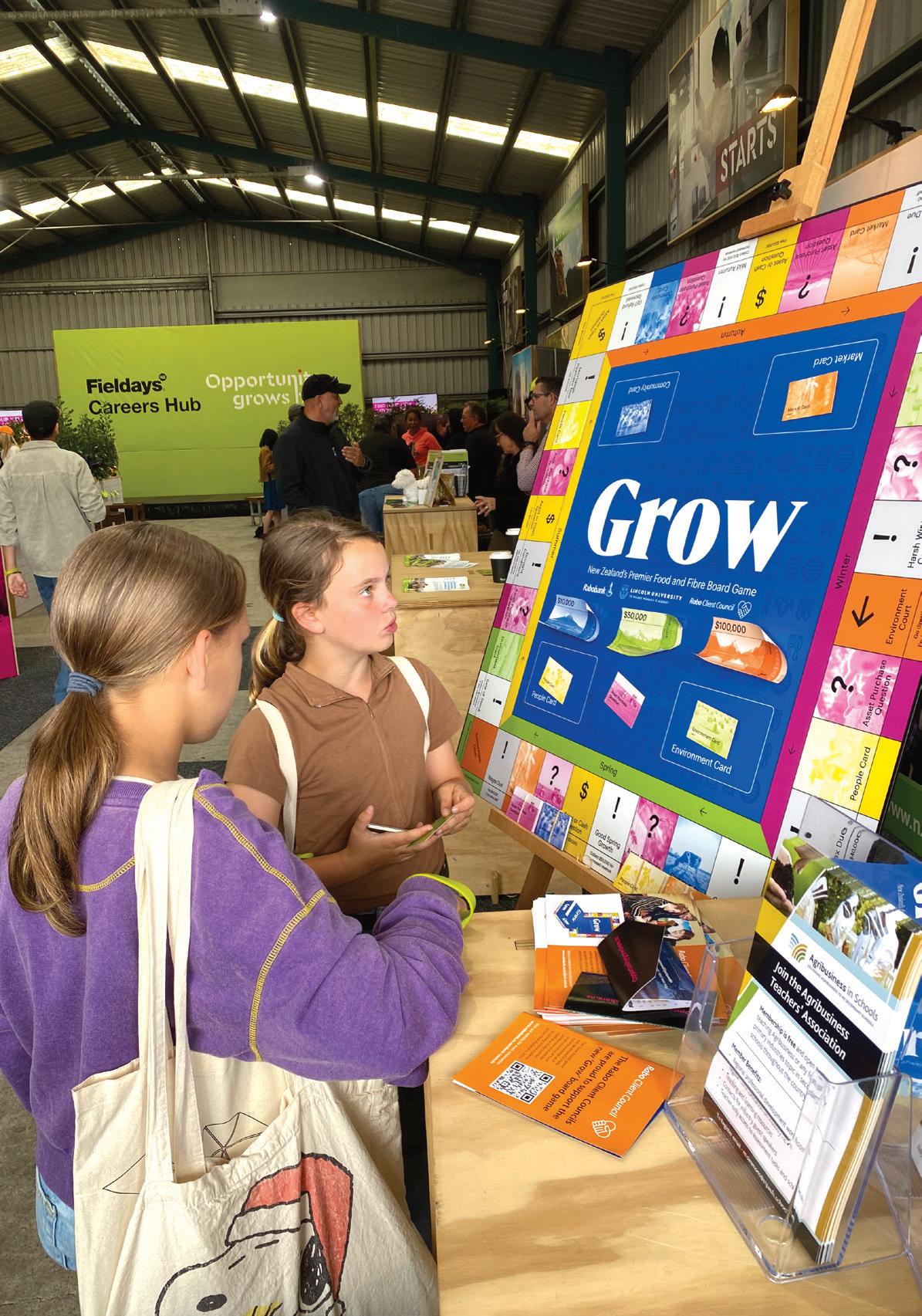 The new board game, Grow was launched last year at the Fieldays Opportunity Grows Here Careers Hub.
The new board game, Grow was launched last year at the Fieldays Opportunity Grows Here Careers Hub.
New game introduces students to intricacies of agricultural sector
A new board game hoping to address the need for more workers in the agricultural sector will be introduced to secondary school students this year.
Grow is a new board game that takes a holistic approach to food production education.
Kerry Allen, project director of the Agribusiness in Schools programme based at St Paul’s Collegiate School, says the game shows students there is more to primary industries than waking up at 4am every day to milk cows.
It aims to encourage students to broaden their minds when thinking of agribusiness and primary industry careers – they could become a designer leading the marketing of Silver Fern Farms in Japan, or an accountant for Fonterra working in downtown Auckland.
“There are different roles you can play in the value chain; the grower, the marketer, the truck driver … The opportunities are huge,” says Kerry.
The game, which took 18 months to develop, was officially launched last year at the Fieldays Opportunity Grows Here Careers Hub.
It was developed in a joint initiative between Te Whare Wānaka o Aoraki Lincoln University, the Agribusiness in Schools Programme and Rabobank.
The game, which can be played by up to six players, addresses all the major topics studied in agribusiness, including food production’s financial, social and environmental aspects.
“Think Monopoly and Trivial Pursuit-style,” says Kerry.
The game also includes elements of mātauranga Māori.
Daily realities of being an agricultural worker
Each player starts with a piece of land and an amount of money. They then get to choose whether to operate a dairy, beef, sheep, viticulture, horticulture or arable farming operation.
As players move around the board, they earn money which allows them to purchase assets needed to operate their farm.
To purchase the asset, however, the student must correctly answer a question related to what they’ve been learning. These questions are themed on real-life topics including soil composition, biodiversity, weather patterns,
biosecurity and biological processes.
“It’s designed so students can easily understand the intricacies and complexities of running a primary business. It’s not like the corner store where generally every day is similar. Some things happen in the primary sector which you have no control over, such as weather or exchange rate,” says Kerry.
“We want students to also understand the management side of running farms; it’s a business. You’ve got to be profitable and meet laws and regulations. You’ve got to ensure you’re meeting sustainable goals and ethical and cultural needs. It’s not just about growing a good crop of carrots.”
Game supports learning
Kerry says the questions align with social science and science learning areas. However, teachers also have room to create their own questions based on their students’ learning interests and needs.
In this way, students can learn about geography and other scientific subjects too.
“Teachers are adaptable so they can re-write the questions or help out with some answers,” Kerry says.
Agribusiness is being developed in The New Zealand Curriculum and as an NCEA subject at Levels 2 and 3, to be implemented in 2026 and 2027 respectively.
The Ministry of Primary Industries has made a call for 50,000 more skilled workers, and wants to introduce more students to the broad scope of careers within the primary sector.
“We still haven’t met that shortfall in the primary sector, which hasn’t traditionally been seen as a good place for people to go into. But there are huge opportunities in the sector. The pay is good. You can get a car, phone, a house, meat and fruit, and international travel,” says Kerry.
“We want to show the primary sector is a good place to start your career. This game will help with that too.”
43 Tukutuku Kōrero 26 June 2023
AGRIBUSINESS


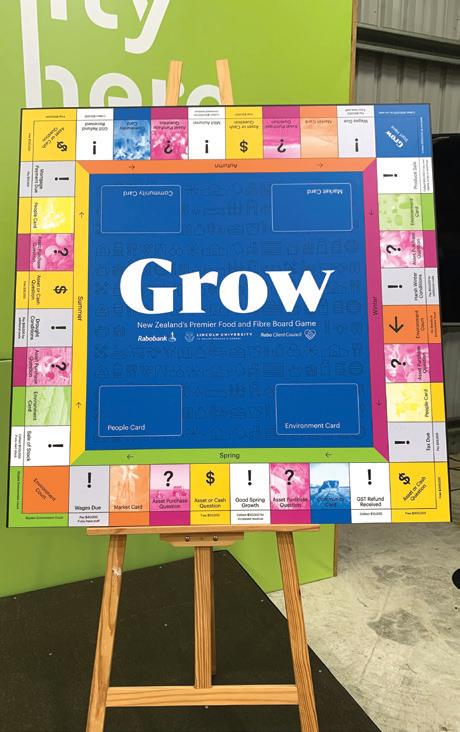

44 Education Gazette gazette.education.govt.nz
St Paul’s Collegiate School students, staff and project partners at the launch of the Grow board game.
Designed to meet industry challenges
Rabobank had originally met with its Upper South Island Client Council and Lincoln University to discuss agricultural industry challenges.
“Over recent years the council has worked closely alongside the university to develop initiatives to highlight to school students the range of career opportunities within the sector,” says Rabobank CEO Todd Charteris.
One of the topics that regularly came up during the conversations was the need to support students’ learning on food production. New Zealand is a world leader in exporting primary food products and this plays an essential role in our economy.

How we produce food shapes our daily lives. From this, the idea of Grow was born.
Kerry says the tactile element of teaching via a board game can be a novelty for students in a digital age.
“The game also brings back some old-fashioned togetherness for group work.”
The board game will be rolled out later this year to more than 200 schools nationwide that teach Agribusiness and Agricultural and Horticultural Science.

If there is enough interest in the game, it may be made available to all secondary schools in New Zealand.
Kerry has already had requests for the game from some primary and intermediate schools.
She says by the end of this year, hopefully 5,000 students will have played the game.
Read more about how agribusiness offers important skills for the future in Education Gazette online.
45 Tukutuku Kōrero 26 June 2023
“We want students to also understand the management side of running farms; it’s a business. You’ve got to be profitable and meet laws and regulations. You’ve got to ensure you’re meeting sustainable goals and ethical and cultural needs. It’s not just about growing a good crop of carrots.”
Kerry Allen
Cashing in on crosscurricular opportunities for social good
Improving financial literacy was the major educational mission of what was a multipurpose market day in Botany, the benefits of which will be felt as far away as Mongolia.
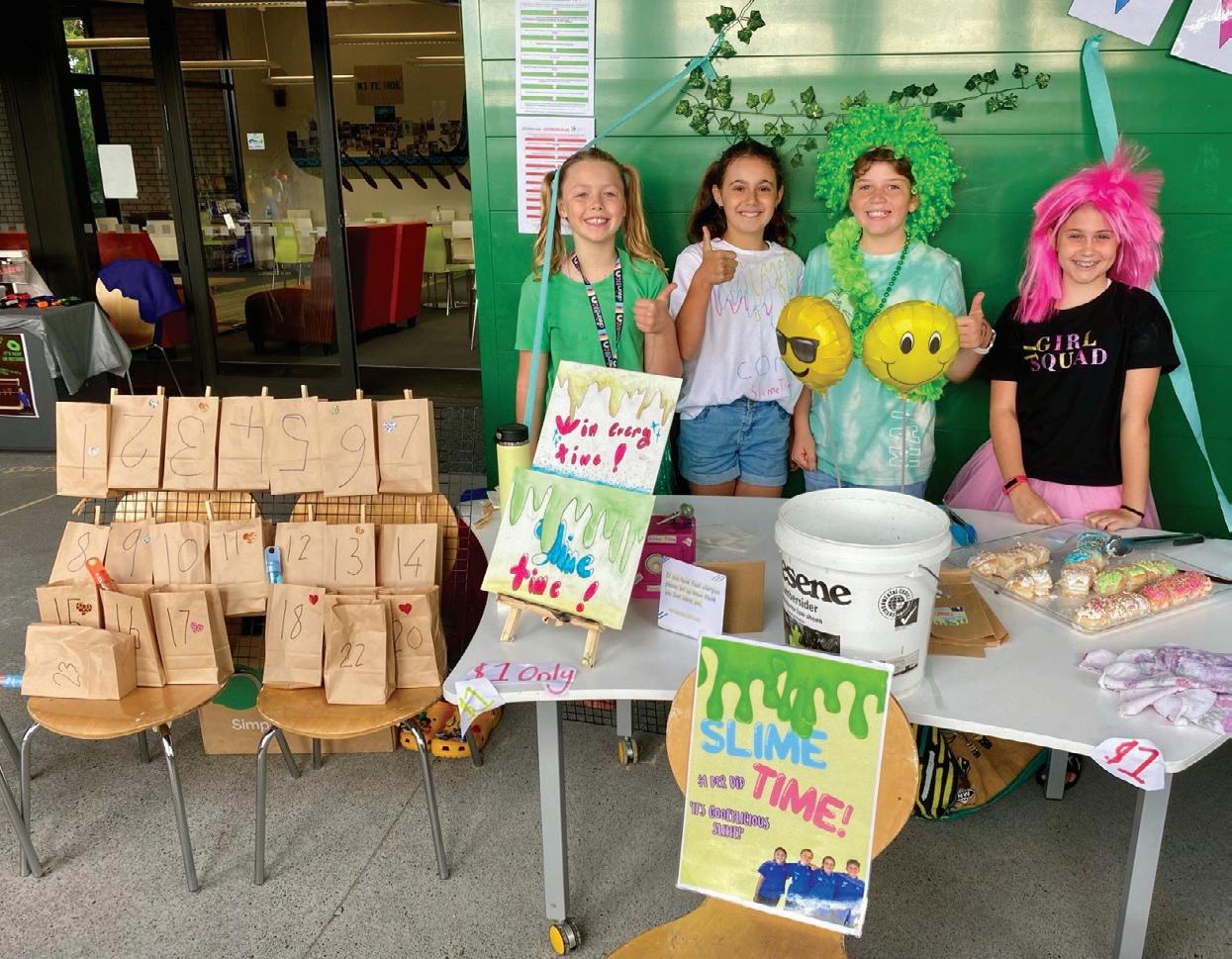
46 Education Gazette gazette.education.govt.nz
INQUIRY LEARNING
Year 6 students Hope, Ariana, Astin and Anuscke with their Slime Time lucky dip activity.
Year 4-6 students at Elim Christian College pooled their knowledge and skills from across social science, statistics, technology, religious education, research, health, literacy, and communication to plan and run a market at their Golflands campus.
Year 5–6 team leader Rachel Arnold led the project, with students pursuing a line of inquiry based on their passions and interests.

Students created a word cloud to help identify topics that were relevant to them all, and then identified ‘burning questions’ to guide the direction of the inquiry.
“The social action was to raise funds for children in Mongolia through Asian Outreach, as well as here in Aotearoa via the Cyclone Relief Fund. This social need area is what they learned about in depth by exploring poverty and the division of wealth,” says Rachel.

Statistics and Tech
Students learned about statistics and undertook a statistical investigation to help them identify a product that was popular among their peers, and likely to make a profit.
They surveyed all year groups in the school, as well as teachers and parents, before graphing and analysing the results.
Based on their results, they then used a technology learning process to further identify, develop and refine their chosen products.
Students came up with food-related ideas such as hot dogs to cake pops, game ideas such as slime lucky dip and nerf target shooting, as well as crafts like bracelets and origami.
Students also combined digital technology and visual language learning by using apps and online software, such as Pic Collage and Canva, to create posters to advertise their stalls.
47 Tukutuku Kōrero 26 June 2023
“That is the goal of te ao tangata | the social science learning area – to create students who are good citizens and contribute positively to our society.”
Rachel Arnold
Haylee and Mikayla, alongside their whānau, serving a customer homemade lemonade.
Hope and Sophia with their persuasive writing.
Economic inquiry meets science
Getwise [ASB’s financial literacy programme] visited the school to teach students about budgeting and, in class, they learned about money in relation to measurement and using decimals.
“They needed to find recipes or instructions, identify materials and ingredients and look at the cost of products. They also needed to look at how much profit they might make. Identifying extra costs, such as the cost of cups or spoons was important too,” says Rachel.
Students gained an understanding of the numbers and impacts of people living in poverty, through a missionminded, child-centred programme organised by Asian Outreach.

Learning about the importance of clean, running water led to experiments with water filtering and learning about water quality.
Rachel says the Year 5–6 students particularly enjoyed learning about water quality and the work of the Tony McLean Trust in Nepal, which Elim Christian College fundraises for yearly.
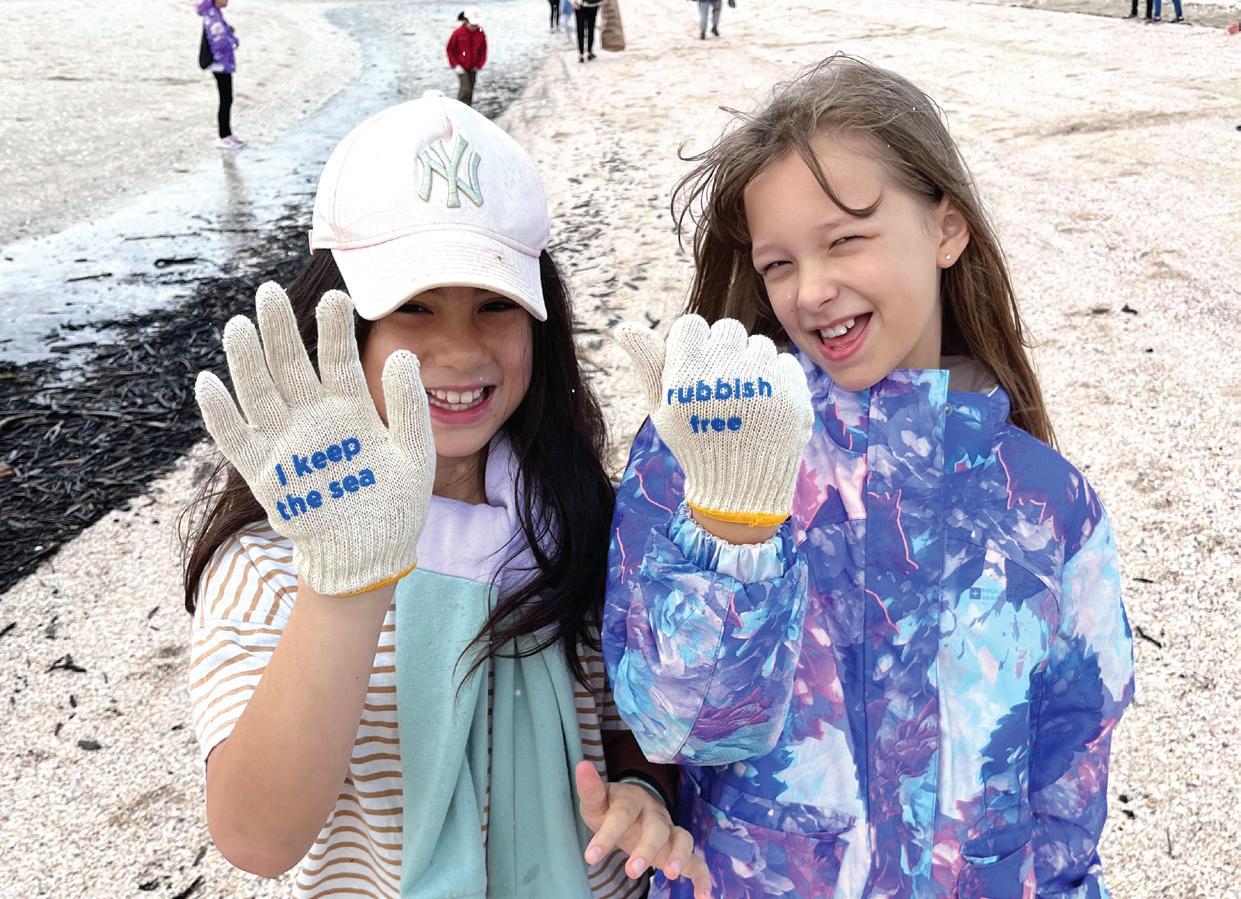
48 Education Gazette gazette.education.govt.nz
Elim Christian College students on a beach clean-up as part of a learning inquiry about water quality and access to clean water.
Year 4 students Jeremiah, Tyler and Lucas with their Mario Brothers themed treats.
“Therefore, we pursued an idea for the following inquiry called ‘Wonderful Wai’, in which students explored the water cycle.
“They conducted water testing (measuring pH, oxygen levels, temperature, nitrate levels and identifying macroinvertebrates) as well as doing a beach and stream clean-up.”
Language and communication
Literacy and language (alliteration, simile, and rhetorical questions) and visual communication (colour, shape, and space) provided key learning areas for students contemplating the best ways to promote their products.
Students interviewed a parent who works in marketing and shared their new latest advertising campaign with the class. She taught the children about the importance of targeting the market, being immediately eye-catching and having a ‘tagline’. Students viewed and analysed various advertisements.
They also learned about persuasive writing and completed a piece of writing every week; planning,
drafting, and editing pieces on aspects of financial literacy throughout the term.
For example, they persuaded the reader on why it is important to save wisely, the value of budgeting, the importance of fundraising for children in Mongolia, and why their market day was a success.
The key competencies and values were important as students needed to utilise soft skills, says Rachel.
“This included effective communication and problem solving in their inquiry groups. They also needed to manage time and resources, delegate, show manaakitanga (respect) to others, demonstrate maia (courage) as they communicated with consumers, take on new roles, share ideas and show aroha (love) by being flexible in making compromises.”

Students constructed their products at school or at home, after allocating tasks to different members of their group.
“Finally, the day arrived! Everyone was ready, the entire school was invited, from Year 1 right through to Year 10, as well as teachers and the wider whānau,” says Rachel.
49 Tukutuku Kōrero 26 June 2023
Kaleb and Zoë's double delicious drinks bar.
Reflections on inquiry process
“The feeling of success for each group as they reflected on the day was immense,” says Rachel.
Students calculated their profits and presented the data by creating bar graphs, pie graphs and pictographs to analyse the data.
“It was exciting to make a sale because other children came to enjoy and purchase the products I had created! My favourite thing was going to other stalls and counting the money we made to help children in poverty in Mongolia.” says Astin, a Year 6 student.
“My friend Zoë and I sold out of our products, and it was fun to go to other students’ market day stalls to see what they had created. I bought food, lemonade, I played a game, and I bought a gift for my family” says Kaleb, Year 5.

As this inquiry wraps up, students are beginning to
turn their attention to kaitiakitanga (guardianship) in relation to marine biomes for their next inquiry.
What started out as a financial literacy exercise ballooned to encompass even more cross-curricular learning.
“The children learned about far more than just financial literacy; they learned about the division of wealth in the world and developed empathy for those struggling financially,” says Rachel.
“This is why the Year 4–6 students chose to give the funds raised to victims of Cyclone Gabrielle and Asian Outreach to help children in Mongolia with winter kits.
“That is the goal of te ao tangata | the social sciences learning area – to create students who are good citizens and contribute positively to our society.”
Cole and his sister with some of their market day purchases.
“My favourite thing was going to other stalls and counting the money we made to help children in poverty in Mongolia.”
50
Astin, Year 6

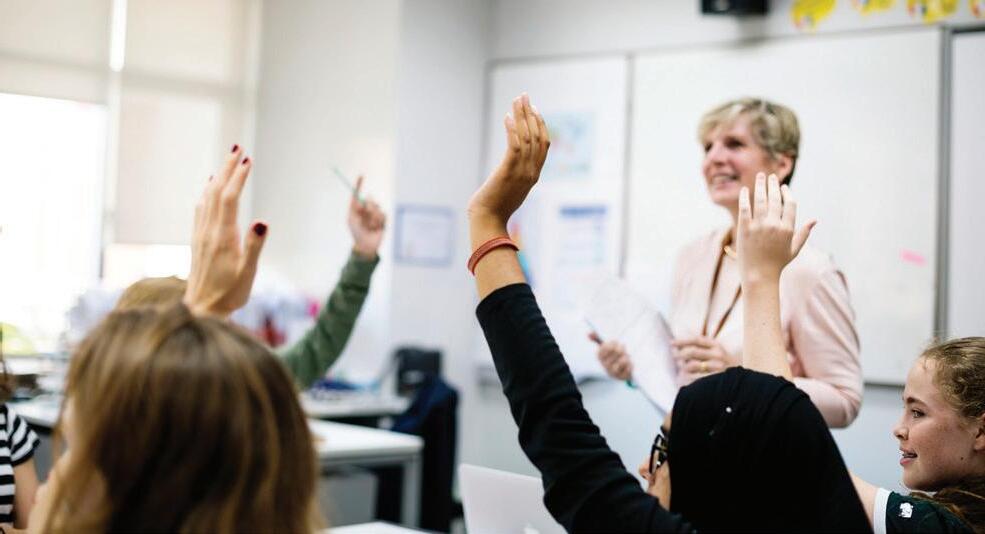
51 Tukutuku Kōrero 26 June 2023
Astin, Ariana and Anuske enjoyed the 'Wonderful Wai' inquiry, including water testing and clean up at a local stream.
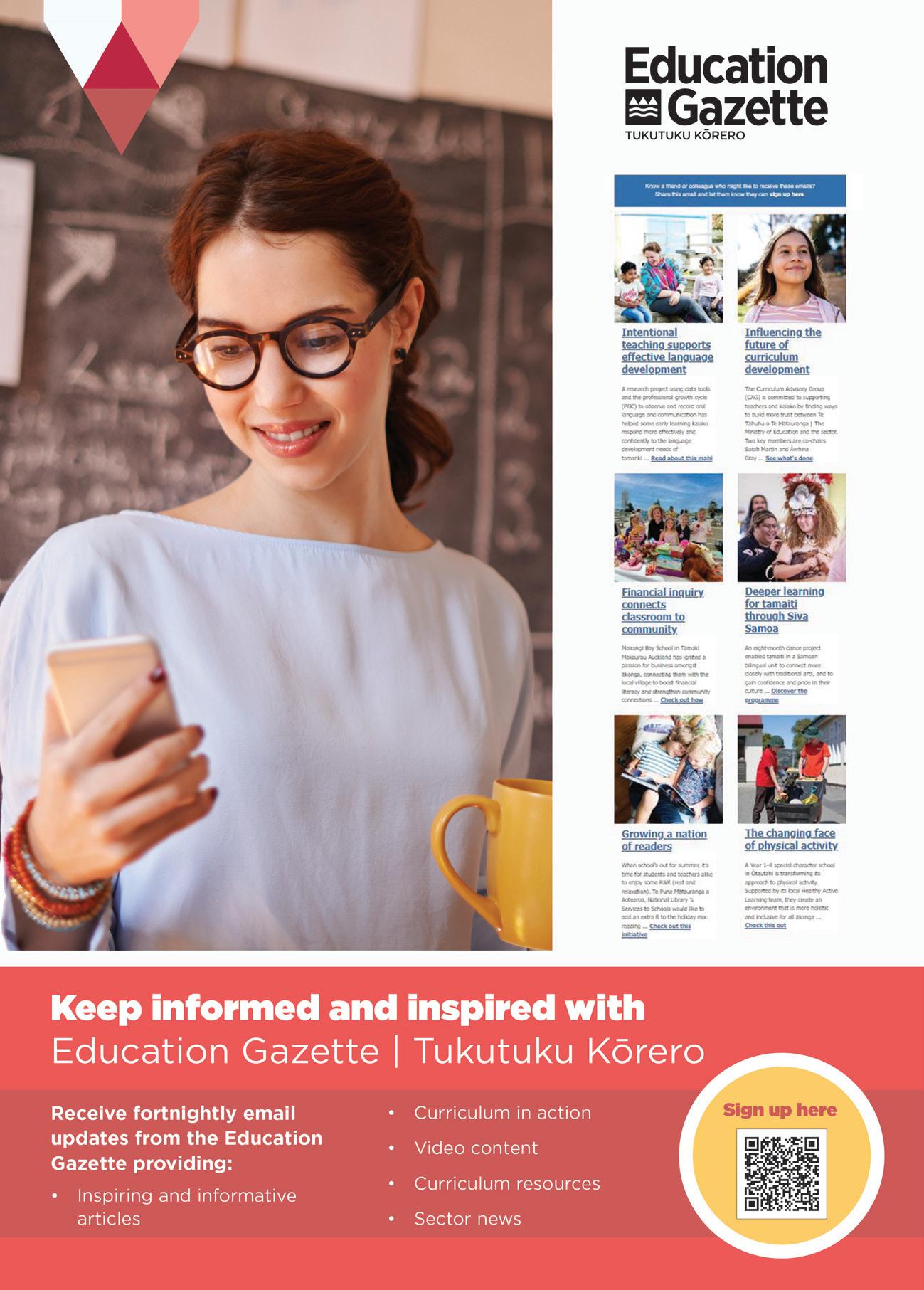
Leadership Advisory Programme Opportunities 2024.
This year the first cohort of Leadership Advisors began providing support to Principals as a new frontline service to schools. Since February, Leadership Advisors have had nearly 1,000 engagements with school leaders individually or in a group/cluster.
We are now looking for the 2024 cohort and call for Expressions of Interest to fill the 12 regional advisory and three national focus advisory positions:
› Rural and Small schools with a Cyclone recovery focus — Hawke’s Bay based.
› Supporting Pacifica Principals — Tāmaki Makaurau based › Area School Advisor — based in Te Waipounamu. We welcome Expressions of Interest from experienced and recently retired Principals from across the sector, school sizes and types. Secondments are for 12, 18 or 24 months. Applicants’ most current renumeration will apply.
How to apply
Leadership Advisor roles
The Leadership Advisors will focus on Principal/Tumuaki in English and Māori medium schools/kura. Your expertise, mana, passion and experience will enable you to contribute to building leadership capability in the sector.
For more information refer to the Education Gazette — online vacancies, and search under leadership section in your region: https://gazette.education.govt.nz/vacancies/ Applications close 9am, 21st July 2023. Successful candidates will know by the end of term 3.
Be part of the Leadership Advisory team as we Support and build leadership capability across the sector, support transformative change across the system and help in the design of a sustainable Leadership Advisory model.
Apply now for Creatives in Schools

Get up to $17,000 for your project
Kura and schools will work with their partner artist to plan and run their project. This can be any type of artform such as visual, performance, design, digital arts, Pacific arts and ngā toi Māori.
If your kura or school is planning to run a creative project for your ākonga in 2024, apply now for Creatives in Schools.
Applications close 21 August 2023.
To apply, visit: creativesinschools.tki.org.nz
For support with your applications, please email: cisregionalsupport@core-ed.ac.nz
For questions, email: CreativesinSchools@education.govt.nz















 Ākonga Turi Māori (Māori Deaf students) have built the Rūaumoko Marae in Minecraft as a legacy learning platform.
Ākonga Turi Māori (Māori Deaf students) have built the Rūaumoko Marae in Minecraft as a legacy learning platform.


 Kaylee explains how stories of the students, kaumātua and tūpuna of the Marae, are shared within the Minecraft platform, using New Zealand Sign Language or subtitles.
Kaylee explains how stories of the students, kaumātua and tūpuna of the Marae, are shared within the Minecraft platform, using New Zealand Sign Language or subtitles.



















 Every year kaiako at Raureka Kindergarten set up a Matariki room where tamariki can spend time and learn more about Matariki whetū.
Every year kaiako at Raureka Kindergarten set up a Matariki room where tamariki can spend time and learn more about Matariki whetū.














 One year old William joyfully experiments with a tī kōuka leaf.
One year old William joyfully experiments with a tī kōuka leaf.











 All the images in this article were supplied by Palmerston North Boys' High School, and show their purpose-built outdoor construction site in action.
All the images in this article were supplied by Palmerston North Boys' High School, and show their purpose-built outdoor construction site in action.





 The new board game, Grow was launched last year at the Fieldays Opportunity Grows Here Careers Hub.
The new board game, Grow was launched last year at the Fieldays Opportunity Grows Here Careers Hub.
















